

Is Time Travel Possible?
We all travel in time! We travel one year in time between birthdays, for example. And we are all traveling in time at approximately the same speed: 1 second per second.
We typically experience time at one second per second. Credit: NASA/JPL-Caltech
NASA's space telescopes also give us a way to look back in time. Telescopes help us see stars and galaxies that are very far away . It takes a long time for the light from faraway galaxies to reach us. So, when we look into the sky with a telescope, we are seeing what those stars and galaxies looked like a very long time ago.
However, when we think of the phrase "time travel," we are usually thinking of traveling faster than 1 second per second. That kind of time travel sounds like something you'd only see in movies or science fiction books. Could it be real? Science says yes!

This image from the Hubble Space Telescope shows galaxies that are very far away as they existed a very long time ago. Credit: NASA, ESA and R. Thompson (Univ. Arizona)
How do we know that time travel is possible?
More than 100 years ago, a famous scientist named Albert Einstein came up with an idea about how time works. He called it relativity. This theory says that time and space are linked together. Einstein also said our universe has a speed limit: nothing can travel faster than the speed of light (186,000 miles per second).
Einstein's theory of relativity says that space and time are linked together. Credit: NASA/JPL-Caltech
What does this mean for time travel? Well, according to this theory, the faster you travel, the slower you experience time. Scientists have done some experiments to show that this is true.
For example, there was an experiment that used two clocks set to the exact same time. One clock stayed on Earth, while the other flew in an airplane (going in the same direction Earth rotates).
After the airplane flew around the world, scientists compared the two clocks. The clock on the fast-moving airplane was slightly behind the clock on the ground. So, the clock on the airplane was traveling slightly slower in time than 1 second per second.
Credit: NASA/JPL-Caltech
Can we use time travel in everyday life?
We can't use a time machine to travel hundreds of years into the past or future. That kind of time travel only happens in books and movies. But the math of time travel does affect the things we use every day.
For example, we use GPS satellites to help us figure out how to get to new places. (Check out our video about how GPS satellites work .) NASA scientists also use a high-accuracy version of GPS to keep track of where satellites are in space. But did you know that GPS relies on time-travel calculations to help you get around town?
GPS satellites orbit around Earth very quickly at about 8,700 miles (14,000 kilometers) per hour. This slows down GPS satellite clocks by a small fraction of a second (similar to the airplane example above).

GPS satellites orbit around Earth at about 8,700 miles (14,000 kilometers) per hour. Credit: GPS.gov
However, the satellites are also orbiting Earth about 12,550 miles (20,200 km) above the surface. This actually speeds up GPS satellite clocks by a slighter larger fraction of a second.
Here's how: Einstein's theory also says that gravity curves space and time, causing the passage of time to slow down. High up where the satellites orbit, Earth's gravity is much weaker. This causes the clocks on GPS satellites to run faster than clocks on the ground.
The combined result is that the clocks on GPS satellites experience time at a rate slightly faster than 1 second per second. Luckily, scientists can use math to correct these differences in time.

If scientists didn't correct the GPS clocks, there would be big problems. GPS satellites wouldn't be able to correctly calculate their position or yours. The errors would add up to a few miles each day, which is a big deal. GPS maps might think your home is nowhere near where it actually is!
In Summary:
Yes, time travel is indeed a real thing. But it's not quite what you've probably seen in the movies. Under certain conditions, it is possible to experience time passing at a different rate than 1 second per second. And there are important reasons why we need to understand this real-world form of time travel.
If you liked this, you may like:
- The Magazine
- Stay Curious
- The Sciences
- Environment
- Planet Earth
Is Time Travel Even Possible? An Astrophysicist Explains The Science Behind The Science Fiction
If traveling into the past is possible, one way to do it might be sending people through tunnels in space..
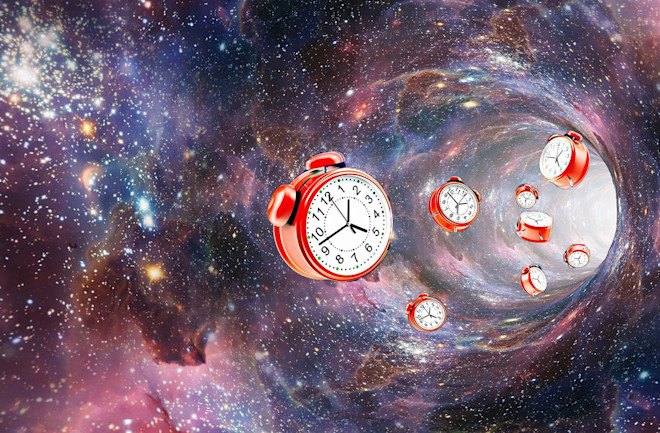
Have you ever dreamed of traveling through time, like characters do in science fiction movies? For centuries, the concept of time travel has captivated people’s imaginations. Time travel is the concept of moving between different points in time, just like you move between different places. In movies, you might have seen characters using special machines, magical devices or even hopping into a futuristic car to travel backward or forward in time.
But is this just a fun idea for movies, or could it really happen?
The question of whether time is reversible remains one of the biggest unresolved questions in science. If the universe follows the laws of thermodynamics , it may not be possible. The second law of thermodynamics states that things in the universe can either remain the same or become more disordered over time.
It’s a bit like saying you can’t unscramble eggs once they’ve been cooked. According to this law, the universe can never go back exactly to how it was before. Time can only go forward, like a one-way street.
Time is relative
However, physicist Albert Einstein’s theory of special relativity suggests that time passes at different rates for different people. Someone speeding along on a spaceship moving close to the speed of light – 671 million miles per hour! – will experience time slower than a person on Earth.
People have yet to build spaceships that can move at speeds anywhere near as fast as light, but astronauts who visit the International Space Station orbit around the Earth at speeds close to 17,500 mph. Astronaut Scott Kelly has spent 520 days at the International Space Station, and as a result has aged a little more slowly than his twin brother – and fellow astronaut – Mark Kelly. Scott used to be 6 minutes younger than his twin brother. Now, because Scott was traveling so much faster than Mark and for so many days, he is 6 minutes and 5 milliseconds younger .
Time isn’t the same everywhere.
Some scientists are exploring other ideas that could theoretically allow time travel. One concept involves wormholes , or hypothetical tunnels in space that could create shortcuts for journeys across the universe. If someone could build a wormhole and then figure out a way to move one end at close to the speed of light – like the hypothetical spaceship mentioned above – the moving end would age more slowly than the stationary end. Someone who entered the moving end and exited the wormhole through the stationary end would come out in their past.
However, wormholes remain theoretical: Scientists have yet to spot one. It also looks like it would be incredibly challenging to send humans through a wormhole space tunnel.
Paradoxes and failed dinner parties
There are also paradoxes associated with time travel. The famous “ grandfather paradox ” is a hypothetical problem that could arise if someone traveled back in time and accidentally prevented their grandparents from meeting. This would create a paradox where you were never born, which raises the question: How could you have traveled back in time in the first place? It’s a mind-boggling puzzle that adds to the mystery of time travel.
Famously, physicist Stephen Hawking tested the possibility of time travel by throwing a dinner party where invitations noting the date, time and coordinates were not sent out until after it had happened. His hope was that his invitation would be read by someone living in the future, who had capabilities to travel back in time. But no one showed up.
As he pointed out : “The best evidence we have that time travel is not possible, and never will be, is that we have not been invaded by hordes of tourists from the future.”
Telescopes are time machines
Interestingly, astrophysicists armed with powerful telescopes possess a unique form of time travel. As they peer into the vast expanse of the cosmos, they gaze into the past universe. Light from all galaxies and stars takes time to travel, and these beams of light carry information from the distant past. When astrophysicists observe a star or a galaxy through a telescope, they are not seeing it as it is in the present, but as it existed when the light began its journey to Earth millions to billions of years ago.
NASA’s newest space telescope, the James Webb Space Telescope , is peering at galaxies that were formed at the very beginning of the Big Bang, about 13.7 billion years ago.
While we aren’t likely to have time machines like the ones in movies anytime soon, scientists are actively researching and exploring new ideas. But for now, we’ll have to enjoy the idea of time travel in our favorite books, movies and dreams.
Adi Foord is an Assistant Professor of Astronomy and Astrophysics at the University of Maryland, Baltimore County. This article is republished from The Conversation under a Creative Commons license . Read the original article .
- engineering
- human spaceflight
Already a subscriber?
Register or Log In

Keep reading for as low as $1.99!
Sign up for our weekly science updates.
Save up to 40% off the cover price when you subscribe to Discover magazine.
April 26, 2023
Is Time Travel Possible?
The laws of physics allow time travel. So why haven’t people become chronological hoppers?
By Sarah Scoles

yuanyuan yan/Getty Images
In the movies, time travelers typically step inside a machine and—poof—disappear. They then reappear instantaneously among cowboys, knights or dinosaurs. What these films show is basically time teleportation .
Scientists don’t think this conception is likely in the real world, but they also don’t relegate time travel to the crackpot realm. In fact, the laws of physics might allow chronological hopping, but the devil is in the details.
Time traveling to the near future is easy: you’re doing it right now at a rate of one second per second, and physicists say that rate can change. According to Einstein’s special theory of relativity, time’s flow depends on how fast you’re moving. The quicker you travel, the slower seconds pass. And according to Einstein’s general theory of relativity , gravity also affects clocks: the more forceful the gravity nearby, the slower time goes.
On supporting science journalism
If you're enjoying this article, consider supporting our award-winning journalism by subscribing . By purchasing a subscription you are helping to ensure the future of impactful stories about the discoveries and ideas shaping our world today.
“Near massive bodies—near the surface of neutron stars or even at the surface of the Earth, although it’s a tiny effect—time runs slower than it does far away,” says Dave Goldberg, a cosmologist at Drexel University.
If a person were to hang out near the edge of a black hole , where gravity is prodigious, Goldberg says, only a few hours might pass for them while 1,000 years went by for someone on Earth. If the person who was near the black hole returned to this planet, they would have effectively traveled to the future. “That is a real effect,” he says. “That is completely uncontroversial.”
Going backward in time gets thorny, though (thornier than getting ripped to shreds inside a black hole). Scientists have come up with a few ways it might be possible, and they have been aware of time travel paradoxes in general relativity for decades. Fabio Costa, a physicist at the Nordic Institute for Theoretical Physics, notes that an early solution with time travel began with a scenario written in the 1920s. That idea involved massive long cylinder that spun fast in the manner of straw rolled between your palms and that twisted spacetime along with it. The understanding that this object could act as a time machine allowing one to travel to the past only happened in the 1970s, a few decades after scientists had discovered a phenomenon called “closed timelike curves.”
“A closed timelike curve describes the trajectory of a hypothetical observer that, while always traveling forward in time from their own perspective, at some point finds themselves at the same place and time where they started, creating a loop,” Costa says. “This is possible in a region of spacetime that, warped by gravity, loops into itself.”
“Einstein read [about closed timelike curves] and was very disturbed by this idea,” he adds. The phenomenon nevertheless spurred later research.
Science began to take time travel seriously in the 1980s. In 1990, for instance, Russian physicist Igor Novikov and American physicist Kip Thorne collaborated on a research paper about closed time-like curves. “They started to study not only how one could try to build a time machine but also how it would work,” Costa says.
Just as importantly, though, they investigated the problems with time travel. What if, for instance, you tossed a billiard ball into a time machine, and it traveled to the past and then collided with its past self in a way that meant its present self could never enter the time machine? “That looks like a paradox,” Costa says.
Since the 1990s, he says, there’s been on-and-off interest in the topic yet no big breakthrough. The field isn’t very active today, in part because every proposed model of a time machine has problems. “It has some attractive features, possibly some potential, but then when one starts to sort of unravel the details, there ends up being some kind of a roadblock,” says Gaurav Khanna of the University of Rhode Island.
For instance, most time travel models require negative mass —and hence negative energy because, as Albert Einstein revealed when he discovered E = mc 2 , mass and energy are one and the same. In theory, at least, just as an electric charge can be positive or negative, so can mass—though no one’s ever found an example of negative mass. Why does time travel depend on such exotic matter? In many cases, it is needed to hold open a wormhole—a tunnel in spacetime predicted by general relativity that connects one point in the cosmos to another.
Without negative mass, gravity would cause this tunnel to collapse. “You can think of it as counteracting the positive mass or energy that wants to traverse the wormhole,” Goldberg says.
Khanna and Goldberg concur that it’s unlikely matter with negative mass even exists, although Khanna notes that some quantum phenomena show promise, for instance, for negative energy on very small scales. But that would be “nowhere close to the scale that would be needed” for a realistic time machine, he says.
These challenges explain why Khanna initially discouraged Caroline Mallary, then his graduate student at the University of Massachusetts Dartmouth, from doing a time travel project. Mallary and Khanna went forward anyway and came up with a theoretical time machine that didn’t require negative mass. In its simplistic form, Mallary’s idea involves two parallel cars, each made of regular matter. If you leave one parked and zoom the other with extreme acceleration, a closed timelike curve will form between them.
Easy, right? But while Mallary’s model gets rid of the need for negative matter, it adds another hurdle: it requires infinite density inside the cars for them to affect spacetime in a way that would be useful for time travel. Infinite density can be found inside a black hole, where gravity is so intense that it squishes matter into a mind-bogglingly small space called a singularity. In the model, each of the cars needs to contain such a singularity. “One of the reasons that there's not a lot of active research on this sort of thing is because of these constraints,” Mallary says.
Other researchers have created models of time travel that involve a wormhole, or a tunnel in spacetime from one point in the cosmos to another. “It's sort of a shortcut through the universe,” Goldberg says. Imagine accelerating one end of the wormhole to near the speed of light and then sending it back to where it came from. “Those two sides are no longer synced,” he says. “One is in the past; one is in the future.” Walk between them, and you’re time traveling.
You could accomplish something similar by moving one end of the wormhole near a big gravitational field—such as a black hole—while keeping the other end near a smaller gravitational force. In that way, time would slow down on the big gravity side, essentially allowing a particle or some other chunk of mass to reside in the past relative to the other side of the wormhole.
Making a wormhole requires pesky negative mass and energy, however. A wormhole created from normal mass would collapse because of gravity. “Most designs tend to have some similar sorts of issues,” Goldberg says. They’re theoretically possible, but there’s currently no feasible way to make them, kind of like a good-tasting pizza with no calories.
And maybe the problem is not just that we don’t know how to make time travel machines but also that it’s not possible to do so except on microscopic scales—a belief held by the late physicist Stephen Hawking. He proposed the chronology protection conjecture: The universe doesn’t allow time travel because it doesn’t allow alterations to the past. “It seems there is a chronology protection agency, which prevents the appearance of closed timelike curves and so makes the universe safe for historians,” Hawking wrote in a 1992 paper in Physical Review D .
Part of his reasoning involved the paradoxes time travel would create such as the aforementioned situation with a billiard ball and its more famous counterpart, the grandfather paradox : If you go back in time and kill your grandfather before he has children, you can’t be born, and therefore you can’t time travel, and therefore you couldn’t have killed your grandfather. And yet there you are.
Those complications are what interests Massachusetts Institute of Technology philosopher Agustin Rayo, however, because the paradoxes don’t just call causality and chronology into question. They also make free will seem suspect. If physics says you can go back in time, then why can’t you kill your grandfather? “What stops you?” he says. Are you not free?
Rayo suspects that time travel is consistent with free will, though. “What’s past is past,” he says. “So if, in fact, my grandfather survived long enough to have children, traveling back in time isn’t going to change that. Why will I fail if I try? I don’t know because I don’t have enough information about the past. What I do know is that I’ll fail somehow.”
If you went to kill your grandfather, in other words, you’d perhaps slip on a banana en route or miss the bus. “It's not like you would find some special force compelling you not to do it,” Costa says. “You would fail to do it for perfectly mundane reasons.”
In 2020 Costa worked with Germain Tobar, then his undergraduate student at the University of Queensland in Australia, on the math that would underlie a similar idea: that time travel is possible without paradoxes and with freedom of choice.
Goldberg agrees with them in a way. “I definitely fall into the category of [thinking that] if there is time travel, it will be constructed in such a way that it produces one self-consistent view of history,” he says. “Because that seems to be the way that all the rest of our physical laws are constructed.”
No one knows what the future of time travel to the past will hold. And so far, no time travelers have come to tell us about it.

- Login/Register
- Solar System
- Exotic Objects
- Upcoming Events
- Deep-Sky Objects
- Observing Basics
- Telescopes and Equipment
- Astrophotography
- Space Exploration
- Human Spaceflight
- Robotic Spaceflight
- The Magazine
Is time travel possible? An astrophysicist explains

Will it ever be possible for time travel to occur? – Alana C., age 12, Queens, New York
Have you ever dreamed of traveling through time, like characters do in science fiction movies? For centuries, the concept of time travel has captivated people’s imaginations. Time travel is the concept of moving between different points in time, just like you move between different places. In movies, you might have seen characters using special machines, magical devices or even hopping into a futuristic car to travel backward or forward in time.
But is this just a fun idea for movies, or could it really happen?
The question of whether time is reversible remains one of the biggest unresolved questions in science. If the universe follows the laws of thermodynamics , it may not be possible. The second law of thermodynamics states that things in the universe can either remain the same or become more disordered over time.
It’s a bit like saying you can’t unscramble eggs once they’ve been cooked. According to this law, the universe can never go back exactly to how it was before. Time can only go forward, like a one-way street.
Time is relative
However, physicist Albert Einstein’s theory of special relativity suggests that time passes at different rates for different people. Someone speeding along on a spaceship moving close to the speed of light – 671 million miles per hour! – will experience time slower than a person on Earth.
Related: The speed of light, explained
People have yet to build spaceships that can move at speeds anywhere near as fast as light, but astronauts who visit the International Space Station orbit around the Earth at speeds close to 17,500 mph. Astronaut Scott Kelly has spent 520 days at the International Space Station, and as a result has aged a little more slowly than his twin brother – and fellow astronaut – Mark Kelly. Scott used to be 6 minutes younger than his twin brother. Now, because Scott was traveling so much faster than Mark and for so many days, he is 6 minutes and 5 milliseconds younger .
Some scientists are exploring other ideas that could theoretically allow time travel. One concept involves wormholes , or hypothetical tunnels in space that could create shortcuts for journeys across the universe. If someone could build a wormhole and then figure out a way to move one end at close to the speed of light – like the hypothetical spaceship mentioned above – the moving end would age more slowly than the stationary end. Someone who entered the moving end and exited the wormhole through the stationary end would come out in their past.
However, wormholes remain theoretical : Scientists have yet to spot one. It also looks like it would be incredibly challenging to send humans through a wormhole space tunnel.
Time travel paradoxes and failed dinner parties
There are also paradoxes associated with time travel. The famous “ grandfather paradox ” is a hypothetical problem that could arise if someone traveled back in time and accidentally prevented their grandparents from meeting. This would create a paradox where you were never born, which raises the question: How could you have traveled back in time in the first place? It’s a mind-boggling puzzle that adds to the mystery of time travel.
Famously, physicist Stephen Hawking tested the possibility of time travel by throwing a dinner party where invitations noting the date, time and coordinates were not sent out until after it had happened. His hope was that his invitation would be read by someone living in the future, who had capabilities to travel back in time. But no one showed up.
As he pointed out : “The best evidence we have that time travel is not possible, and never will be, is that we have not been invaded by hordes of tourists from the future.”
Telescopes are time machines
Interestingly, astrophysicists armed with powerful telescopes possess a unique form of time travel. As they peer into the vast expanse of the cosmos, they gaze into the past universe. Light from all galaxies and stars takes time to travel, and these beams of light carry information from the distant past. When astrophysicists observe a star or a galaxy through a telescope, they are not seeing it as it is in the present, but as it existed when the light began its journey to Earth millions to billions of years ago.
NASA’s newest space telescope, the James Webb Space Telescope , is peering at galaxies that were formed at the very beginning of the Big Bang, about 13.7 billion years ago.
While we aren’t likely to have time machines like the ones in movies anytime soon, scientists are actively researching and exploring new ideas. But for now, we’ll have to enjoy the idea of time travel in our favorite books, movies and dreams.
This article first appeared on the Conversation. You can read the original here .
Hello, curious kids! Do you have a question you’d like an expert to answer? Ask an adult to send your question to [email protected] . Please tell us your name, age and the city where you live.
And since curiosity has no age limit – adults, let us know what you’re wondering, too. We won’t be able to answer every question, but we will do our best.

ALMA reveals a star’s surface in unprecedented detail
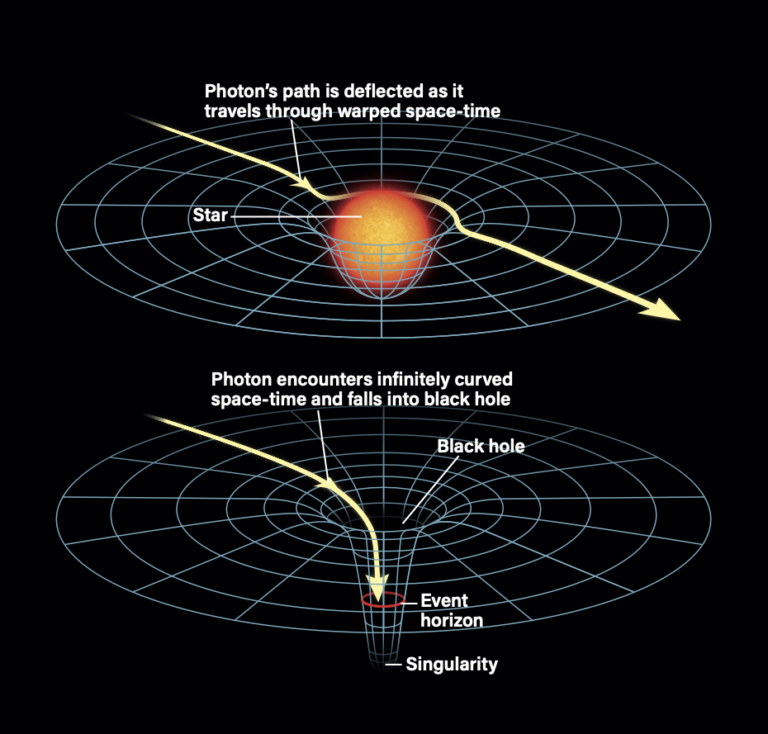
How can a black hole pull light into itself if a photon is massless?
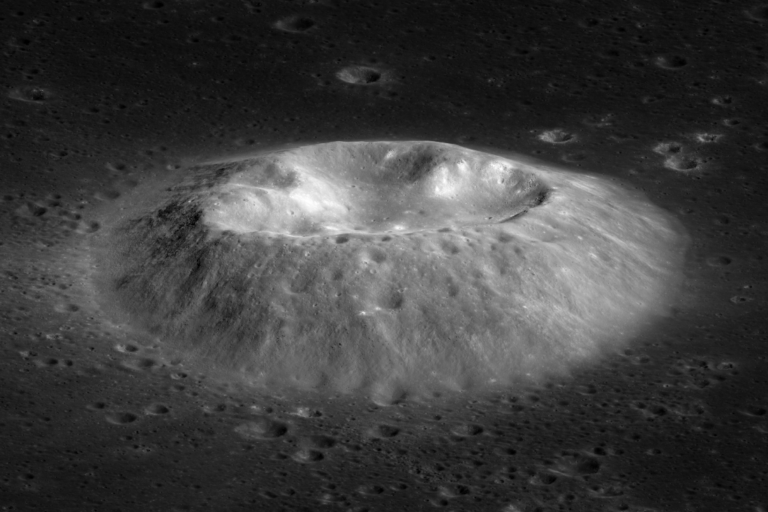
Volcanoes were erupting on the Moon while dinosaurs roamed Earth, Chang’e 5 samples suggest

New Horizons measures how dark the universe can get

What we do — and don’t — know about dark energy

Get to know the Andromeda Galaxy
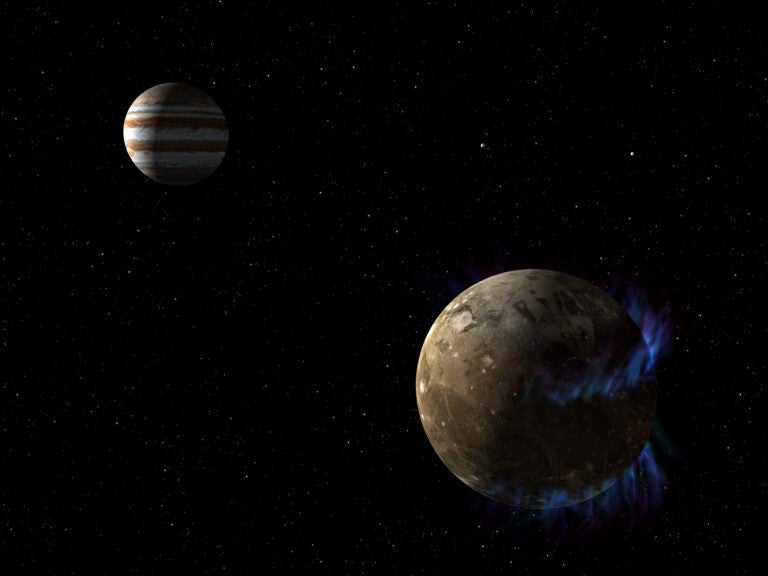
Scientists view Ganymede’s aurorae dancing during eclipse

Waves may be heating the solar wind — and two spacecraft caught them in action

Rogue worlds may give clues as to how stars form
Is time travel possible? Why one scientist says we 'cannot ignore the possibility.'

A common theme in science-fiction media , time travel is captivating. It’s defined by the late philosopher David Lewis in his essay “The Paradoxes of Time Travel” as “[involving] a discrepancy between time and space time. Any traveler departs and then arrives at his destination; the time elapsed from departure to arrival … is the duration of the journey.”
Time travel is usually understood by most as going back to a bygone era or jumping forward to a point far in the future . But how much of the idea is based in reality? Is it possible to travel through time?
Is time travel possible?
According to NASA, time travel is possible , just not in the way you might expect. Albert Einstein’s theory of relativity says time and motion are relative to each other, and nothing can go faster than the speed of light , which is 186,000 miles per second. Time travel happens through what’s called “time dilation.”
Time dilation , according to Live Science, is how one’s perception of time is different to another's, depending on their motion or where they are. Hence, time being relative.
Learn more: Best travel insurance
Dr. Ana Alonso-Serrano, a postdoctoral researcher at the Max Planck Institute for Gravitational Physics in Germany, explained the possibility of time travel and how researchers test theories.
Space and time are not absolute values, Alonso-Serrano said. And what makes this all more complex is that you are able to carve space-time .
“In the moment that you carve the space-time, you can play with that curvature to make the time come in a circle and make a time machine,” Alonso-Serrano told USA TODAY.
She explained how, theoretically, time travel is possible. The mathematics behind creating curvature of space-time are solid, but trying to re-create the strict physical conditions needed to prove these theories can be challenging.
“The tricky point of that is if you can find a physical, realistic, way to do it,” she said.
Alonso-Serrano said wormholes and warp drives are tools that are used to create this curvature. The matter needed to achieve curving space-time via a wormhole is exotic matter , which hasn’t been done successfully. Researchers don’t even know if this type of matter exists, she said.
“It's something that we work on because it's theoretically possible, and because it's a very nice way to test our theory, to look for possible paradoxes,” Alonso-Serrano added.
“I could not say that nothing is possible, but I cannot ignore the possibility,” she said.
She also mentioned the anecdote of Stephen Hawking’s Champagne party for time travelers . Hawking had a GPS-specific location for the party. He didn’t send out invites until the party had already happened, so only people who could travel to the past would be able to attend. No one showed up, and Hawking referred to this event as "experimental evidence" that time travel wasn't possible.
What did Albert Einstein invent?: Discoveries that changed the world
Just Curious for more? We've got you covered
USA TODAY is exploring the questions you and others ask every day. From "How to watch the Marvel movies in order" to "Why is Pluto not a planet?" to "What to do if your dog eats weed?" – we're striving to find answers to the most common questions you ask every day. Head to our Just Curious section to see what else we can answer for you.
- Skip to main content
- Keyboard shortcuts for audio player

- LISTEN & FOLLOW
- Apple Podcasts
- Amazon Music
- Amazon Alexa
Your support helps make our show possible and unlocks access to our sponsor-free feed.
Paradox-Free Time Travel Is Theoretically Possible, Researchers Say

Matthew S. Schwartz

A dog dressed as Marty McFly from Back to the Future attends the Tompkins Square Halloween Dog Parade in 2015. New research says time travel might be possible without the problems McFly encountered. Timothy A. Clary/AFP via Getty Images hide caption
A dog dressed as Marty McFly from Back to the Future attends the Tompkins Square Halloween Dog Parade in 2015. New research says time travel might be possible without the problems McFly encountered.
"The past is obdurate," Stephen King wrote in his book about a man who goes back in time to prevent the Kennedy assassination. "It doesn't want to be changed."
Turns out, King might have been on to something.
Countless science fiction tales have explored the paradox of what would happen if you went back in time and did something in the past that endangered the future. Perhaps one of the most famous pop culture examples is in Back to the Future , when Marty McFly goes back in time and accidentally stops his parents from meeting, putting his own existence in jeopardy.
But maybe McFly wasn't in much danger after all. According a new paper from researchers at the University of Queensland, even if time travel were possible, the paradox couldn't actually exist.
Researchers ran the numbers and determined that even if you made a change in the past, the timeline would essentially self-correct, ensuring that whatever happened to send you back in time would still happen.
"Say you traveled in time in an attempt to stop COVID-19's patient zero from being exposed to the virus," University of Queensland scientist Fabio Costa told the university's news service .
"However, if you stopped that individual from becoming infected, that would eliminate the motivation for you to go back and stop the pandemic in the first place," said Costa, who co-authored the paper with honors undergraduate student Germain Tobar.
"This is a paradox — an inconsistency that often leads people to think that time travel cannot occur in our universe."
A variation is known as the "grandfather paradox" — in which a time traveler kills their own grandfather, in the process preventing the time traveler's birth.
The logical paradox has given researchers a headache, in part because according to Einstein's theory of general relativity, "closed timelike curves" are possible, theoretically allowing an observer to travel back in time and interact with their past self — potentially endangering their own existence.
But these researchers say that such a paradox wouldn't necessarily exist, because events would adjust themselves.
Take the coronavirus patient zero example. "You might try and stop patient zero from becoming infected, but in doing so, you would catch the virus and become patient zero, or someone else would," Tobar told the university's news service.
In other words, a time traveler could make changes, but the original outcome would still find a way to happen — maybe not the same way it happened in the first timeline but close enough so that the time traveler would still exist and would still be motivated to go back in time.
"No matter what you did, the salient events would just recalibrate around you," Tobar said.
The paper, "Reversible dynamics with closed time-like curves and freedom of choice," was published last week in the peer-reviewed journal Classical and Quantum Gravity . The findings seem consistent with another time travel study published this summer in the peer-reviewed journal Physical Review Letters. That study found that changes made in the past won't drastically alter the future.
Bestselling science fiction author Blake Crouch, who has written extensively about time travel, said the new study seems to support what certain time travel tropes have posited all along.
"The universe is deterministic and attempts to alter Past Event X are destined to be the forces which bring Past Event X into being," Crouch told NPR via email. "So the future can affect the past. Or maybe time is just an illusion. But I guess it's cool that the math checks out."
- time travel
- grandfather paradox

Is time travel even possible? An astrophysicist explains the science behind the science fiction
Published: Nov 13, 2023
By: Magazine Editor
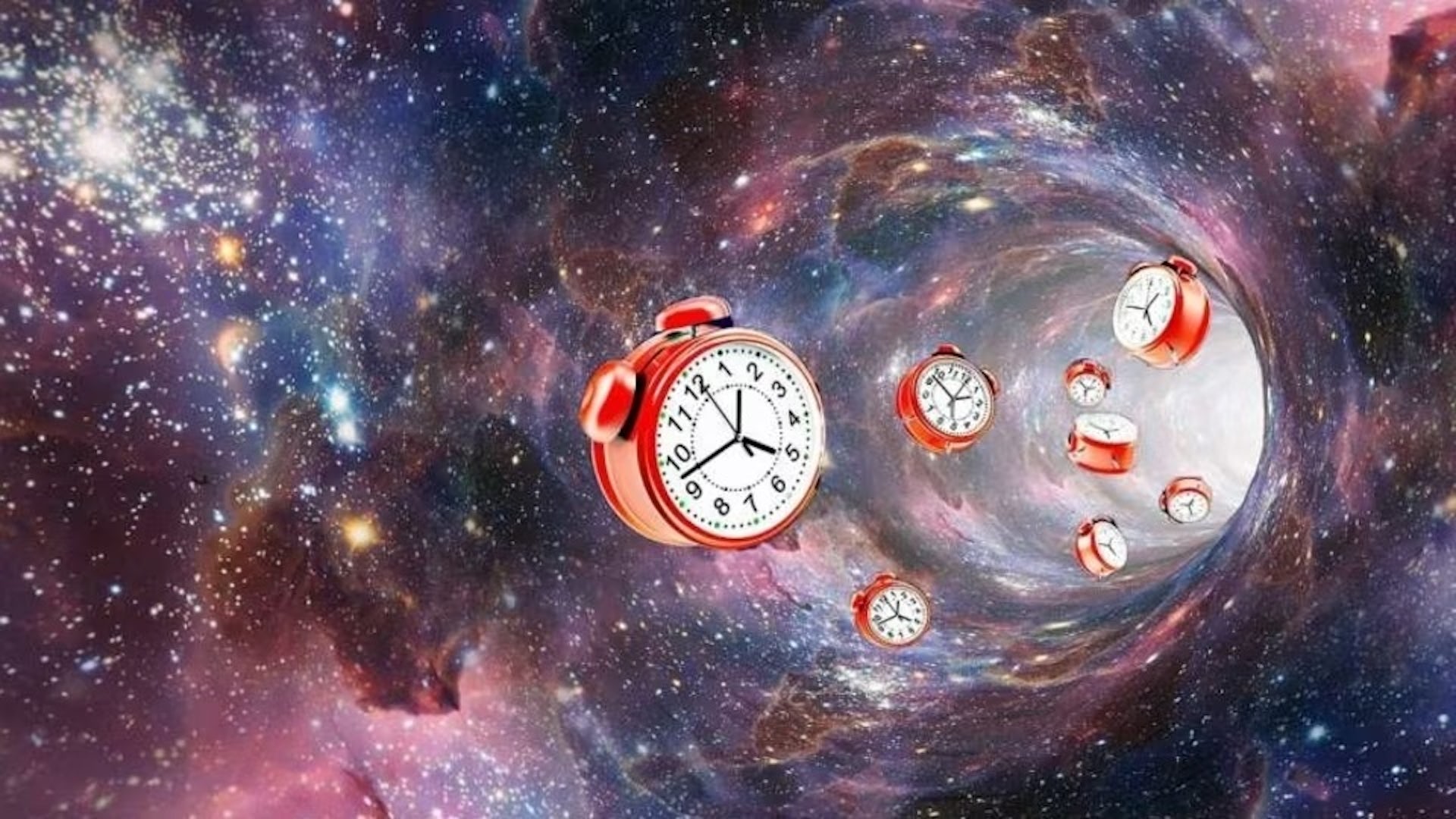
Written by Adi Foord , assistant professor of physics , UMBC
Curious Kids is a series for children of all ages. If you have a question you’d like an expert to answer, send it to [email protected] .
Will it ever be possible for time travel to occur? – Alana C., age 12, Queens, New York
Have you ever dreamed of traveling through time, like characters do in science fiction movies? For centuries, the concept of time travel has captivated people’s imaginations. Time travel is the concept of moving between different points in time, just like you move between different places. In movies, you might have seen characters using special machines, magical devices or even hopping into a futuristic car to travel backward or forward in time.
But is this just a fun idea for movies, or could it really happen?
The question of whether time is reversible remains one of the biggest unresolved questions in science. If the universe follows the laws of thermodynamics , it may not be possible. The second law of thermodynamics states that things in the universe can either remain the same or become more disordered over time.
It’s a bit like saying you can’t unscramble eggs once they’ve been cooked. According to this law, the universe can never go back exactly to how it was before. Time can only go forward, like a one-way street.
Time is relative
However, physicist Albert Einstein’s theory of special relativity suggests that time passes at different rates for different people. Someone speeding along on a spaceship moving close to the speed of light – 671 million miles per hour! – will experience time slower than a person on Earth.
People have yet to build spaceships that can move at speeds anywhere near as fast as light, but astronauts who visit the International Space Station orbit around the Earth at speeds close to 17,500 mph. Astronaut Scott Kelly has spent 520 days at the International Space Station, and as a result has aged a little more slowly than his twin brother – and fellow astronaut – Mark Kelly. Scott used to be 6 minutes younger than his twin brother. Now, because Scott was traveling so much faster than Mark and for so many days, he is 6 minutes and 5 milliseconds younger .
Some scientists are exploring other ideas that could theoretically allow time travel. One concept involves wormholes , or hypothetical tunnels in space that could create shortcuts for journeys across the universe. If someone could build a wormhole and then figure out a way to move one end at close to the speed of light – like the hypothetical spaceship mentioned above – the moving end would age more slowly than the stationary end. Someone who entered the moving end and exited the wormhole through the stationary end would come out in their past.
However, wormholes remain theoretical: Scientists have yet to spot one. It also looks like it would be incredibly challenging to send humans through a wormhole space tunnel.
Paradoxes and failed dinner parties
There are also paradoxes associated with time travel. The famous “ grandfather paradox ” is a hypothetical problem that could arise if someone traveled back in time and accidentally prevented their grandparents from meeting. This would create a paradox where you were never born, which raises the question: How could you have traveled back in time in the first place? It’s a mind-boggling puzzle that adds to the mystery of time travel.
Famously, physicist Stephen Hawking tested the possibility of time travel by throwing a dinner party where invitations noting the date, time and coordinates were not sent out until after it had happened. His hope was that his invitation would be read by someone living in the future, who had capabilities to travel back in time. But no one showed up.
As he pointed out : “The best evidence we have that time travel is not possible, and never will be, is that we have not been invaded by hordes of tourists from the future.”
Telescopes are time machines
Interestingly, astrophysicists armed with powerful telescopes possess a unique form of time travel. As they peer into the vast expanse of the cosmos, they gaze into the past universe. Light from all galaxies and stars takes time to travel, and these beams of light carry information from the distant past. When astrophysicists observe a star or a galaxy through a telescope, they are not seeing it as it is in the present, but as it existed when the light began its journey to Earth millions to billions of years ago. https://www.youtube.com/embed/QeRtcJi3V38?wmode=transparent&start=0 Telescopes are a kind of time machine – they let you peer into the past.
NASA’s newest space telescope, the James Webb Space Telescope , is peering at galaxies that were formed at the very beginning of the Big Bang, about 13.7 billion years ago.
While we aren’t likely to have time machines like the ones in movies anytime soon, scientists are actively researching and exploring new ideas. But for now, we’ll have to enjoy the idea of time travel in our favorite books, movies and dreams.
This article is republished from The Conversation under a Creative Commons license. Read the original article and see more than 250 UMBC articles available in The Conversation.
Tags: CNMS , Physics , The Conversation
Related Posts

Healing from home—with Taylor Gaines ’13, Doc on the Go

The specter of China has edged into US election rhetoric − for Republicans much more than Democrats

UMBC students expand skill sets, explore career opportunities with summer 2024 internships
Search UMBC Search
- Accreditation
- Consumer Information
- Equal Opportunity
- Privacy PDF Download
- Web Accessibility
Search UMBC.edu
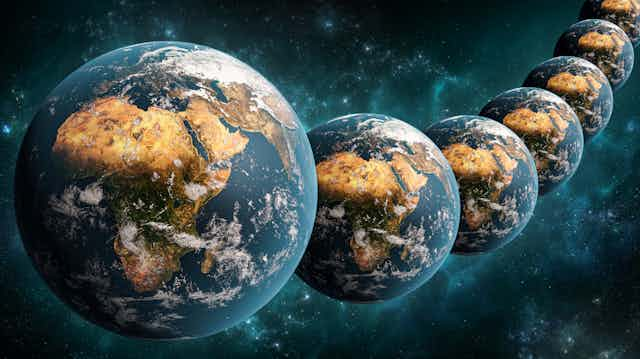
Time travel could be possible, but only with parallel timelines
Assistant Professor, Physics, Brock University
Disclosure statement
Barak Shoshany does not work for, consult, own shares in or receive funding from any company or organisation that would benefit from this article, and has disclosed no relevant affiliations beyond their academic appointment.
Brock University provides funding as a member of The Conversation CA-FR.
Brock University provides funding as a member of The Conversation CA.
View all partners
Have you ever made a mistake that you wish you could undo? Correcting past mistakes is one of the reasons we find the concept of time travel so fascinating. As often portrayed in science fiction, with a time machine, nothing is permanent anymore — you can always go back and change it. But is time travel really possible in our universe , or is it just science fiction?
Read more: Curious Kids: is time travel possible for humans?
Our modern understanding of time and causality comes from general relativity . Theoretical physicist Albert Einstein’s theory combines space and time into a single entity — “spacetime” — and provides a remarkably intricate explanation of how they both work, at a level unmatched by any other established theory. This theory has existed for more than 100 years, and has been experimentally verified to extremely high precision, so physicists are fairly certain it provides an accurate description of the causal structure of our universe.
For decades, physicists have been trying to use general relativity to figure out if time travel is possible . It turns out that you can write down equations that describe time travel and are fully compatible and consistent with relativity. But physics is not mathematics, and equations are meaningless if they do not correspond to anything in reality.
Arguments against time travel
There are two main issues which make us think these equations may be unrealistic. The first issue is a practical one: building a time machine seems to require exotic matter , which is matter with negative energy. All the matter we see in our daily lives has positive energy — matter with negative energy is not something you can just find lying around. From quantum mechanics, we know that such matter can theoretically be created, but in too small quantities and for too short times .
However, there is no proof that it is impossible to create exotic matter in sufficient quantities. Furthermore, other equations may be discovered that allow time travel without requiring exotic matter. Therefore, this issue may just be a limitation of our current technology or understanding of quantum mechanics.

The other main issue is less practical, but more significant: it is the observation that time travel seems to contradict logic, in the form of time travel paradoxes . There are several types of such paradoxes, but the most problematic are consistency paradoxes .
A popular trope in science fiction, consistency paradoxes happen whenever there is a certain event that leads to changing the past, but the change itself prevents this event from happening in the first place.
For example, consider a scenario where I enter my time machine, use it to go back in time five minutes, and destroy the machine as soon as I get to the past. Now that I destroyed the time machine, it would be impossible for me to use it five minutes later.
But if I cannot use the time machine, then I cannot go back in time and destroy it. Therefore, it is not destroyed, so I can go back in time and destroy it. In other words, the time machine is destroyed if and only if it is not destroyed. Since it cannot be both destroyed and not destroyed simultaneously, this scenario is inconsistent and paradoxical.
Eliminating the paradoxes
There’s a common misconception in science fiction that paradoxes can be “created.” Time travellers are usually warned not to make significant changes to the past and to avoid meeting their past selves for this exact reason. Examples of this may be found in many time travel movies, such as the Back to the Future trilogy.
But in physics, a paradox is not an event that can actually happen — it is a purely theoretical concept that points towards an inconsistency in the theory itself. In other words, consistency paradoxes don’t merely imply time travel is a dangerous endeavour, they imply it simply cannot be possible.
This was one of the motivations for theoretical physicist Stephen Hawking to formulate his chronology protection conjecture , which states that time travel should be impossible. However, this conjecture so far remains unproven. Furthermore, the universe would be a much more interesting place if instead of eliminating time travel due to paradoxes, we could just eliminate the paradoxes themselves.
One attempt at resolving time travel paradoxes is theoretical physicist Igor Dmitriyevich Novikov’s self-consistency conjecture , which essentially states that you can travel to the past, but you cannot change it.
According to Novikov, if I tried to destroy my time machine five minutes in the past, I would find that it is impossible to do so. The laws of physics would somehow conspire to preserve consistency.
Introducing multiple histories
But what’s the point of going back in time if you cannot change the past? My recent work, together with my students Jacob Hauser and Jared Wogan, shows that there are time travel paradoxes that Novikov’s conjecture cannot resolve. This takes us back to square one, since if even just one paradox cannot be eliminated, time travel remains logically impossible.
So, is this the final nail in the coffin of time travel? Not quite. We showed that allowing for multiple histories (or in more familiar terms, parallel timelines) can resolve the paradoxes that Novikov’s conjecture cannot. In fact, it can resolve any paradox you throw at it.
The idea is very simple. When I exit the time machine, I exit into a different timeline. In that timeline, I can do whatever I want, including destroying the time machine, without changing anything in the original timeline I came from. Since I cannot destroy the time machine in the original timeline, which is the one I actually used to travel back in time, there is no paradox.
After working on time travel paradoxes for the last three years , I have become increasingly convinced that time travel could be possible, but only if our universe can allow multiple histories to coexist. So, can it?
Quantum mechanics certainly seems to imply so, at least if you subscribe to Everett’s “many-worlds” interpretation , where one history can “split” into multiple histories, one for each possible measurement outcome – for example, whether Schrödinger’s cat is alive or dead, or whether or not I arrived in the past.
But these are just speculations. My students and I are currently working on finding a concrete theory of time travel with multiple histories that is fully compatible with general relativity. Of course, even if we manage to find such a theory, this would not be sufficient to prove that time travel is possible, but it would at least mean that time travel is not ruled out by consistency paradoxes.
Time travel and parallel timelines almost always go hand-in-hand in science fiction, but now we have proof that they must go hand-in-hand in real science as well. General relativity and quantum mechanics tell us that time travel might be possible, but if it is, then multiple histories must also be possible.
- Time travel
- Theoretical physics
- Time machine
- Albert Einstein
- Listen to this article
- Time travel paradox

University Relations Manager

2024 Vice-Chancellor's Research Fellowships

Head of Research Computing & Data Solutions

Community member RANZCO Education Committee (Volunteer)

Director of STEM
Thank you for visiting nature.com. You are using a browser version with limited support for CSS. To obtain the best experience, we recommend you use a more up to date browser (or turn off compatibility mode in Internet Explorer). In the meantime, to ensure continued support, we are displaying the site without styles and JavaScript.
- View all journals
- Explore content
- About the journal
- Publish with us
- Sign up for alerts
- BOOKS AND ARTS
- 16 April 2018
The illusion of time
- Andrew Jaffe 0
Andrew Jaffe is a cosmologist and head of astrophysics at Imperial College London.
You can also search for this author in PubMed Google Scholar
Illustration by Stephan Schmitz
You have full access to this article via your institution.
The Order of Time Carlo Rovelli Allen Lane (2018)
According to theoretical physicist Carlo Rovelli, time is an illusion: our naive perception of its flow doesn’t correspond to physical reality. Indeed, as Rovelli argues in The Order of Time , much more is illusory, including Isaac Newton’s picture of a universally ticking clock. Even Albert Einstein’s relativistic space-time — an elastic manifold that contorts so that local times differ depending on one’s relative speed or proximity to a mass — is just an effective simplification.
So what does Rovelli think is really going on? He posits that reality is just a complex network of events onto which we project sequences of past, present and future. The whole Universe obeys the laws of quantum mechanics and thermodynamics, out of which time emerges.
Rovelli is one of the creators and champions of loop quantum gravity theory, one of several ongoing attempts to marry quantum mechanics with general relativity. In contrast to the better-known string theory, loop quantum gravity does not attempt to be a ‘theory of everything’ out of which we can generate all of particle physics and gravitation. Nevertheless, its agenda of joining up these two fundamentally differing laws is incredibly ambitious.
Alongside and inspired by his work in quantum gravity, Rovelli puts forward the idea of ‘physics without time’. This stems from the fact that some equations of quantum gravity (such as the Wheeler–DeWitt equation, which assigns quantum states to the Universe) can be written without any reference to time at all.
As Rovelli explains, the apparent existence of time — in our perceptions and in physical descriptions, written in the mathematical languages of Newton, Einstein and Erwin Schrödinger — comes not from knowledge, but from ignorance. ‘Forward in time’ is the direction in which entropy increases, and in which we gain information.
The book is split into three parts. In the first, “The Crumbling of Time”, Rovelli attempts to show how established physics theories deconstruct our common-sense ideas. Einstein showed us that time is just a fourth dimension and that there is nothing special about ‘now’; even ‘past’ and ‘future’ are not always well defined. The malleability of space and time mean that two events occurring far apart might even happen in one order when viewed by one observer, and in the opposite order when viewed by another.
Rovelli gives good descriptions of the classical physics of Newton and Ludwig Boltzmann, and of modern physics through the lenses of Einstein and quantum mechanics. There are parallels with thermodynamics and Bayesian probability theory, which both rely on the concept of entropy, and might therefore be used to argue that the flow of time is a subjective feature of the Universe, not an objective part of the physical description.
But I quibble with the details of some of Rovelli’s pronouncements. For example, it is far from certain that space-time is quantized, in the sense of space and time being packaged in minimal lengths or periods (the Planck length or time). Rather, our understanding peters out at those very small intervals for which we need both quantum mechanics and relativity to explain things.
In part two, “The World without Time”, Rovelli puts forward the idea that events (just a word for a given time and location at which something might happen), rather than particles or fields, are the basic constituents of the world. The task of physics is to describe the relationships between those events: as Rovelli notes, “A storm is not a thing, it’s a collection of occurrences.” At our level, each of those events looks like the interaction of particles at a particular position and time; but time and space themselves really only manifest out of their interactions and the web of causality between them.
In the final section, “The Sources of Time”, Rovelli reconstructs how our illusions have arisen, from aspects of thermodynamics and quantum mechanics. He argues that our perception of time’s flow depends entirely on our inability to see the world in all its detail. Quantum uncertainty means we cannot know the positions and speeds of all the particles in the Universe. If we could, there would be no entropy, and no unravelling of time. Rovelli originated this ‘thermal time hypothesis’ with French mathematician Alain Connes.
The Order of Time is a compact and elegant book. Each chapter starts with an apt ode from classical Latin poet Horace — I particularly liked “Don’t attempt abstruse calculations”. And the writing, translated from Italian by Erica Segre and Simon Carnell, is more stylish than that in most physics books. Rovelli ably brings in the thoughts of philosophers Martin Heidegger and Edmund Husserl, sociologist Émile Durkheim and psychologist William James, along with physicist-favourite philosophers such as Hilary Putnam and Willard Van Orman Quine. Occasionally, the writing strays into floweriness. For instance, Rovelli describes his final section as “a fiery magma of ideas, sometimes illuminating, sometimes confusing”.
Ultimately, I’m not sure I buy Rovelli’s ideas, about either loop quantum gravity or the thermal time hypothesis. And this book alone would not give a lay reader enough information to render judgement. The Order of Time does, however, raise and explore big issues that are very much alive in modern physics, and are closely related to the way in which we limited beings observe and participate in the world.
Nature 556 , 304-305 (2018)
doi: https://doi.org/10.1038/d41586-018-04558-7
Related Articles

Cooling positronium to ultralow velocities with a chirped laser pulse train
Article 11 SEP 24

Two-axis twisting using Floquet-engineered XYZ spin models with polar molecules

Observing the two-dimensional Bose glass in an optical quasicrystal

Rapa Nui’s population history rewritten using ancient DNA
News & Views 11 SEP 24

Famed Pacific island’s population ‘crash’ debunked by ancient DNA
News 11 SEP 24

Back to the future: two books that tried to predict how science would evolve
News & Views 10 SEP 24
Faculty Position
The Institute of Cellular and Organismic Biology (ICOB), Academia Sinica, Taiwan, is seeking candidates to fill multiple tenure-track faculty position
Taipei (TW)
Institute of Cellular and Organismic Biology, Academia Sinica
Postdoctoral Associate
Houston, Texas (US)
Baylor College of Medicine (BCM)
Associate or Senior Editor, Nature Energy
Job Title: Associate or Senior Editor, Nature Energy Location: New York, Jersey City, Philadelphia or London — Hybrid Working Application Deadline:...
New York City, New York (US)
Springer Nature Ltd
Open Rank Tenure-track/Tenured Faculty Positions in the Department of Genetic and Genomic Sciences
Seeking expertise in areas including Cancer Genetics; Artificial Intelligence; Drug Development & Clinical Trials; Functional Genomics; & Gene Editing
Mount Sinai Department of Genetics and Genomic Sciences
Assistant Professor (Tenure Track) of Robotics
The Department of Mechanical and Process Engineering (D-MAVT, www.mavt.ethz.ch) at ETH Zurich invites applications for the above-mentioned position.
Zurich city
Sign up for the Nature Briefing newsletter — what matters in science, free to your inbox daily.
Quick links
- Explore articles by subject
- Guide to authors
- Editorial policies
share this!
April 25, 2022
Time travel could be possible, but only with parallel timelines
by Barak Shoshany, The Conversation

Have you ever made a mistake that you wish you could undo? Correcting past mistakes is one of the reasons we find the concept of time travel so fascinating. As often portrayed in science fiction, with a time machine, nothing is permanent anymore—you can always go back and change it. But is time travel really possible in our universe , or is it just science fiction?
Our modern understanding of time and causality comes from general relativity . Theoretical physicist Albert Einstein's theory combines space and time into a single entity—"spacetime"—and provides a remarkably intricate explanation of how they both work, at a level unmatched by any other established theory. This theory has existed for more than 100 years, and has been experimentally verified to extremely high precision, so physicists are fairly certain it provides an accurate description of the causal structure of our universe.
For decades, physicists have been trying to use general relativity to figure out if time travel is possible . It turns out that you can write down equations that describe time travel and are fully compatible and consistent with relativity. But physics is not mathematics, and equations are meaningless if they do not correspond to anything in reality.
Arguments against time travel
There are two main issues which make us think these equations may be unrealistic. The first issue is a practical one: building a time machine seems to require exotic matter , which is matter with negative energy. All the matter we see in our daily lives has positive energy—matter with negative energy is not something you can just find lying around. From quantum mechanics , we know that such matter can theoretically be created, but in too small quantities and for too short times .
However, there is no proof that it is impossible to create exotic matter in sufficient quantities. Furthermore, other equations may be discovered that allow time travel without requiring exotic matter . Therefore, this issue may just be a limitation of our current technology or understanding of quantum mechanics.
The other main issue is less practical, but more significant: it is the observation that time travel seems to contradict logic, in the form of time travel paradoxes . There are several types of such paradoxes, but the most problematic are consistency paradoxes .
A popular trope in science fiction, consistency paradoxes happen whenever there is a certain event that leads to changing the past, but the change itself prevents this event from happening in the first place.
For example, consider a scenario where I enter my time machine, use it to go back in time five minutes, and destroy the machine as soon as I get to the past. Now that I destroyed the time machine, it would be impossible for me to use it five minutes later.
But if I cannot use the time machine, then I cannot go back in time and destroy it. Therefore, it is not destroyed, so I can go back in time and destroy it. In other words, the time machine is destroyed if and only if it is not destroyed. Since it cannot be both destroyed and not destroyed simultaneously, this scenario is inconsistent and paradoxical.
Eliminating the paradoxes
There's a common misconception in science fiction that paradoxes can be "created." Time travelers are usually warned not to make significant changes to the past and to avoid meeting their past selves for this exact reason. Examples of this may be found in many time travel movies, such as the "Back to the Future" trilogy.
But in physics, a paradox is not an event that can actually happen—it is a purely theoretical concept that points towards an inconsistency in the theory itself. In other words, consistency paradoxes don't merely imply time travel is a dangerous endeavor, they imply it simply cannot be possible.
This was one of the motivations for theoretical physicist Stephen Hawking to formulate his chronology protection conjecture , which states that time travel should be impossible. However, this conjecture so far remains unproven. Furthermore, the universe would be a much more interesting place if instead of eliminating time travel due to paradoxes, we could just eliminate the paradoxes themselves.
One attempt at resolving time travel paradoxes is theoretical physicist Igor Dmitriyevich Novikov's self-consistency conjecture , which essentially states that you can travel to the past, but you cannot change it.
According to Novikov, if I tried to destroy my time machine five minutes in the past, I would find that it is impossible to do so. The laws of physics would somehow conspire to preserve consistency.
Introducing multiple histories
But what's the point of going back in time if you cannot change the past? My recent work, together with my students Jacob Hauser and Jared Wogan, shows that there are time travel paradoxes that Novikov's conjecture cannot resolve. This takes us back to square one, since if even just one paradox cannot be eliminated, time travel remains logically impossible.
So, is this the final nail in the coffin of time travel? Not quite. We showed that allowing for multiple histories (or in more familiar terms, parallel timelines) can resolve the paradoxes that Novikov's conjecture cannot. In fact, it can resolve any paradox you throw at it.
The idea is very simple. When I exit the time machine, I exit into a different timeline. In that timeline, I can do whatever I want, including destroying the time machine, without changing anything in the original timeline I came from. Since I cannot destroy the time machine in the original timeline, which is the one I actually used to travel back in time, there is no paradox.
After working on time travel paradoxes for the last three years , I have become increasingly convinced that time travel could be possible, but only if our universe can allow multiple histories to coexist. So, can it?
Quantum mechanics certainly seems to imply so, at least if you subscribe to Everett's "many-worlds" interpretation , where one history can "split" into multiple histories, one for each possible measurement outcome—for example, whether Schrödinger's cat is alive or dead, or whether or not I arrived in the past.
But these are just speculations. My students and I are currently working on finding a concrete theory of time travel with multiple histories that is fully compatible with general relativity . Of course, even if we manage to find such a theory, this would not be sufficient to prove that time travel is possible, but it would at least mean that time travel is not ruled out by consistency paradoxes.
Time travel and parallel timelines almost always go hand-in-hand in science fiction , but now we have proof that they must go hand-in-hand in real science as well. General relativity and quantum mechanics tell us that time travel might be possible, but if it is, then multiple histories must also be possible.
Provided by The Conversation
Explore further
Feedback to editors

Astronomers discover new planet in Great Bear constellation
26 minutes ago

Device malfunctions from continuous current lead to discovery that can improve design of microelectronic devices


Soil pH drives microbial community composition: Study shows how bacteria work together to thrive in difficult conditions

Gravity study gives insights into hidden features beneath lost ocean of Mars and rising Olympus Mons

Technique to study how proteins bind to DNA is easily misused: Researchers offer a solution

Findings from experimental setup demonstrate potential for compact and portable nuclear clocks

Global warming is driving rapid evolutionary response in fruit flies, research suggests

Social connections and local identities found to influence how language spreads in different areas

Proteins involved in regulating the cell membrane could lead to new treatments
2 hours ago

Chemical imaging method holds promise for separate overlapping fingerprints
Relevant physicsforums posts, looking for info on old, unlabeled geissler tubes.
4 hours ago
Why does my ceiling glow in the dark?
Sep 8, 2024
How does output voltage of an electric guitar work?
Sep 6, 2024
Brownian Motions and Quantifying Randomness in Physical Systems
Sep 2, 2024
Container in an MRI room
Sep 1, 2024
Hysteresis of a Compressed Solid
Aug 30, 2024
More from Other Physics Topics
Related Stories

Time travel is possible – but only if you have an object with infinite mass
Dec 13, 2018

Young physicist 'squares the numbers' on time travel
Sep 24, 2020

Video: Can wormholes act like time machines?
Apr 30, 2020

Stephen Hawking's final book suggests time travel may one day be possible – here's what to make of it
Nov 9, 2018

Avengers: Endgame exploits time travel and quantum mechanics as it tries to restore the universe
Apr 25, 2019

Warp drives: Physicists give chances of faster-than-light space travel a boost
Apr 26, 2021
Recommended for you

A fundamental magnetic property of the muon measured to unprecedented precision

Experimental data help unravel the mystery surrounding the creation of heavy elements in stars
22 hours ago

Laser and X-ray combo creates star-like conditions inside a hair-thin wire
Sep 12, 2024

Discovery of a new phase of matter in 2D defies normal statistical mechanics
Sep 11, 2024

Scientists cool positronium to near absolute zero for antimatter research
Let us know if there is a problem with our content.
Use this form if you have come across a typo, inaccuracy or would like to send an edit request for the content on this page. For general inquiries, please use our contact form . For general feedback, use the public comments section below (please adhere to guidelines ).
Please select the most appropriate category to facilitate processing of your request
Thank you for taking time to provide your feedback to the editors.
Your feedback is important to us. However, we do not guarantee individual replies due to the high volume of messages.
E-mail the story
Your email address is used only to let the recipient know who sent the email. Neither your address nor the recipient's address will be used for any other purpose. The information you enter will appear in your e-mail message and is not retained by Phys.org in any form.
Newsletter sign up
Get weekly and/or daily updates delivered to your inbox. You can unsubscribe at any time and we'll never share your details to third parties.
More information Privacy policy
Donate and enjoy an ad-free experience
We keep our content available to everyone. Consider supporting Science X's mission by getting a premium account.
E-mail newsletter
Time Travel Probably Isn't Possible—Why Do We Wish It Were?
Time travel exerts an irresistible pull on our scientific and storytelling imagination.
Since H.G. Wells imagined that time was a fourth dimension —and Einstein confirmed it—the idea of time travel has captivated us. More than 50 scientific papers are published on time travel each year, and storytellers continually explore it—from Stephen King’s JFK assassination novel 11/22/63 to the steamy Outlander television series to Woody Allen’s comedy Midnight in Paris . What if we could travel back in time, we wonder, and change history? Assassinate Hitler or marry that high school sweetheart who dumped us? What if we could see what the future has in store?
These are some of the ideas that bestselling author James Gleick explores in his thought-provoking new book, Time Travel: A History. Speaking from his home in New York City, he recalls how Stephen Hawking once sent out invitations to a party that had already taken place ; why the Chinese government has branded time travel as “incorrect” and “frivolous” ; and how the idea of time travel is, ultimately, about our desire to defeat death.
Let’s cut right to the chase: What is time?
Oh, no, you didn’t! [ Laughs. ] In A.D. 400, St. Augustine said—and many people have said the same thing since, either quoting him consciously or unconsciously—“What, then, is time? If no one asks me, I know. If I wish to explain it to one that asks, I know not.” I think that is actually not a quip, but quite profound.
The best way to understand time is to recognize that we actually are very sophisticated about it. Over the past century-plus, we’ve learned a great deal. The physicist John Archibald Wheeler said, “Time is nature’s way to keep everything from happening all at once.” If you look it up in a dictionary, you get stuff like, “The general term for the experience of duration.” But that’s just completely punting because what is duration ?
I try to steer away from aphorisms and dictionary definitions, just to say two things. First, that we have a lot of contradictory ways of talking about time. We think of time as something we waste, spend, or save, as if it’s a quantity. We also think of time as a medium we are passing through every day, a river carrying us along. All of these notions are aspects of a complicated subject that has no bumper sticker answer.
When does the idea of time travel first appear in the West? And how did it impact popular culture?
I assumed, as a person who always read sci-fi a lot when I was a kid, that time travel is an obvious idea we’re born knowing and fantasizing about. And that it must always have been part of human culture, that there must be time travel Greek myths and Chinese legends. But there aren’t! Time travel turns out to be a very new idea that essentially starts with H.G. Wells’s 1895 novel, The Time Machine . Before that nobody thought of putting the words time and travel together. The closest you can come before that is people falling asleep, like Rip Van Winkle, or fantasies like Charles Dickens’s A Christmas Carol .
Become a subscriber and support our award-winning editorial features, videos, photography, and more—for as little as $2/mo.
The beginning of my book is an attempt to answer the question, “Why? Why not before? Why suddenly at the end of the 19 th century was it possible— necessary— for people to dream up this crazy fantasy?” Even though it’s H.G. Wells who does it, people pick up his ball very quickly and run with it. You find it in American science fiction that started appearing in pulp magazines in the 1920s and 1930s, or in the great new modernist literature of Marcel Proust’s In Search of Lost Time , James Joyce, and Virginia Woolf.
All these writers were suddenly making time their explicit subject, twisting time in new ways, inventing new narrative techniques to deal with time, to explore the vagaries of memory or the way our consciousness changes over time.
In 1991, Stephen Hawking wrote a paper called “Chronology Protection Conjecture , ” in which he asked: If time travel is possible, why are we not inundated with tourists from the future? He has a point, doesn’t he?
Yes! He even scheduled a party and sent out an invitation inviting time travelers to come to a party that had taken place in the past. Then he observed that none of them had shown up. [Laughs.] Hawking is one of these physicists who love playing with the idea of time travel. It’s irresistible because it’s so much fun! When he talks about the paradoxes of time travel it’s because he’s reading the same science fiction stories as the rest of us.
The paradoxes started appearing in magazines aimed mostly at young people in the 1920s. Somebody wrote in and said, “Time travel is a weird idea, because what if you go back in time and you kill your grandfather? Then your grandfather never meets your grandmother and you’re never born.” It’s an impossible loop.
Hawking, like other physicists, decided, “Time is my business. What if we take this seriously? Can we express this in physical terms?” I don’t think he succeeded but what he proposed was that the reason these paradoxes can’t happen is because the universe takes care of itself. It can’t happen because it didn’t happen. That’s the simple way of saying what the chronology protection conjecture is.
How have the Internet and other new technologies changed our perception and experience of time?
We are just beginning to see what the Internet is doing to our perception of time. We are living more and more in this networked world in which everything travels at light speed. We are multitasking and experiencing new forms of simultaneity, so the Internet appears to us as a kind of hall of mirrors. It feels as though we’re embedded in an ever expanding present.
Our sense of the past changes because in some ways the past becomes more vivid than ever. We’re looking at the past on our video screens and it’s just as vivid if the movie is about something that happened 20 years ago, as if it is a live stream. We can’t always tell the difference. On the other hand, the past that’s more distant—and isn’t available in video form—starts to seem more remote and fuzzier. Maybe we are forgetting how to visualize the past from reading histories. We’re entering a new period of time confusion, in which we suddenly find ourselves in what looks like an unending present.
In 2011, the Chinese government issued an extraordinary denunciation of the idea of time travel. What was their beef?
They thought it was corrupting and decadent. It’s a reminder that time travel is neither a simple nor innocent idea. It’s very powerful. It enables us to imagine alternative universes, and this is another line that science fiction writers have explored. What if someone was able to go back in time and kill Hitler?
Time travel is also a powerful way of allowing us to imagine what the future might bring. A lot of futurists nowadays tend to be dystopian. Time travel gives us ways of exploring how the worst tendencies of our current societies could grow even worse. That’s what George Orwell did in 1984 . I imagine the Chinese government doesn’t particularly want the equivalent of 1984 to be published in Beijing. [ Laughs. ]
You May Also Like
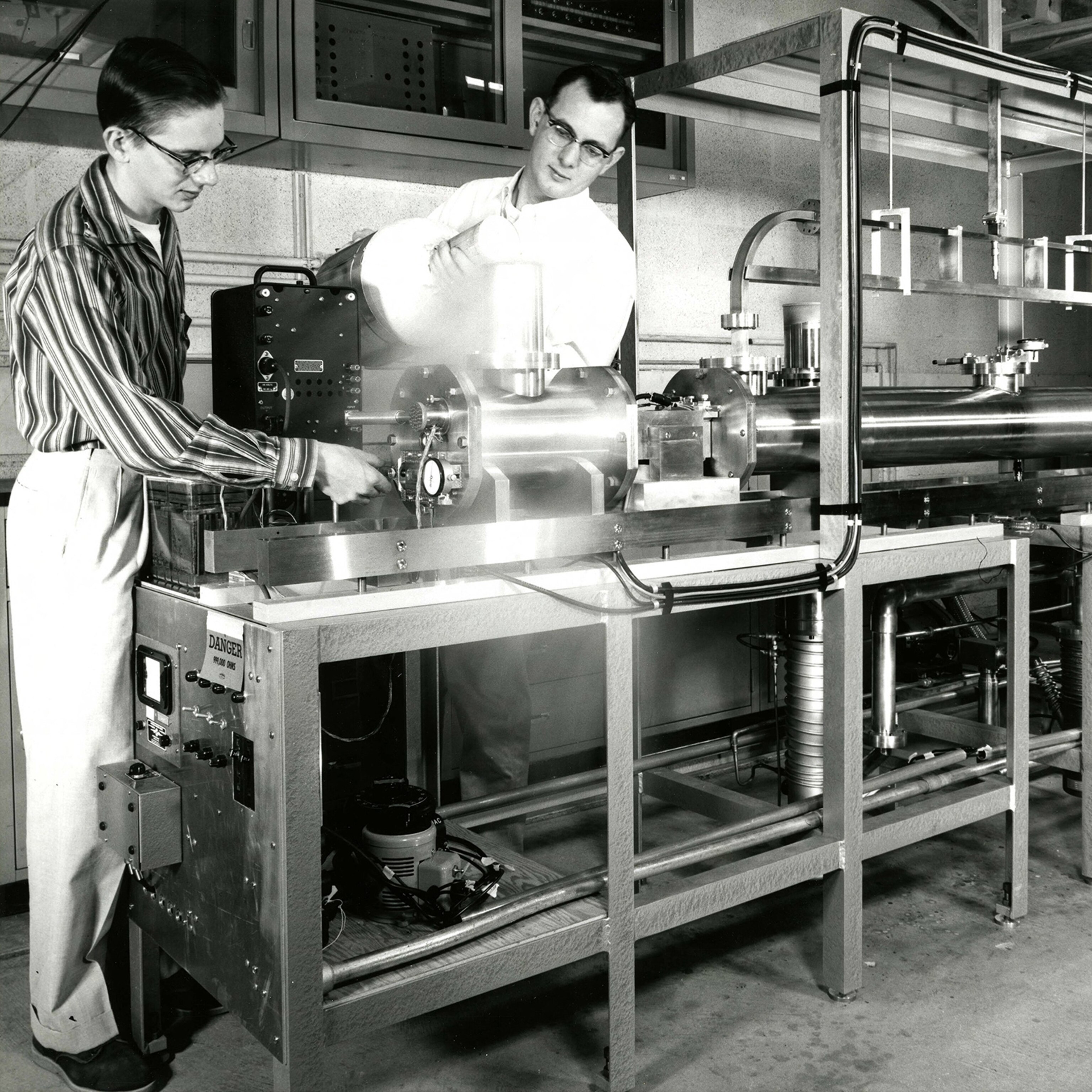
What's a leap second—and why is it going away for good?
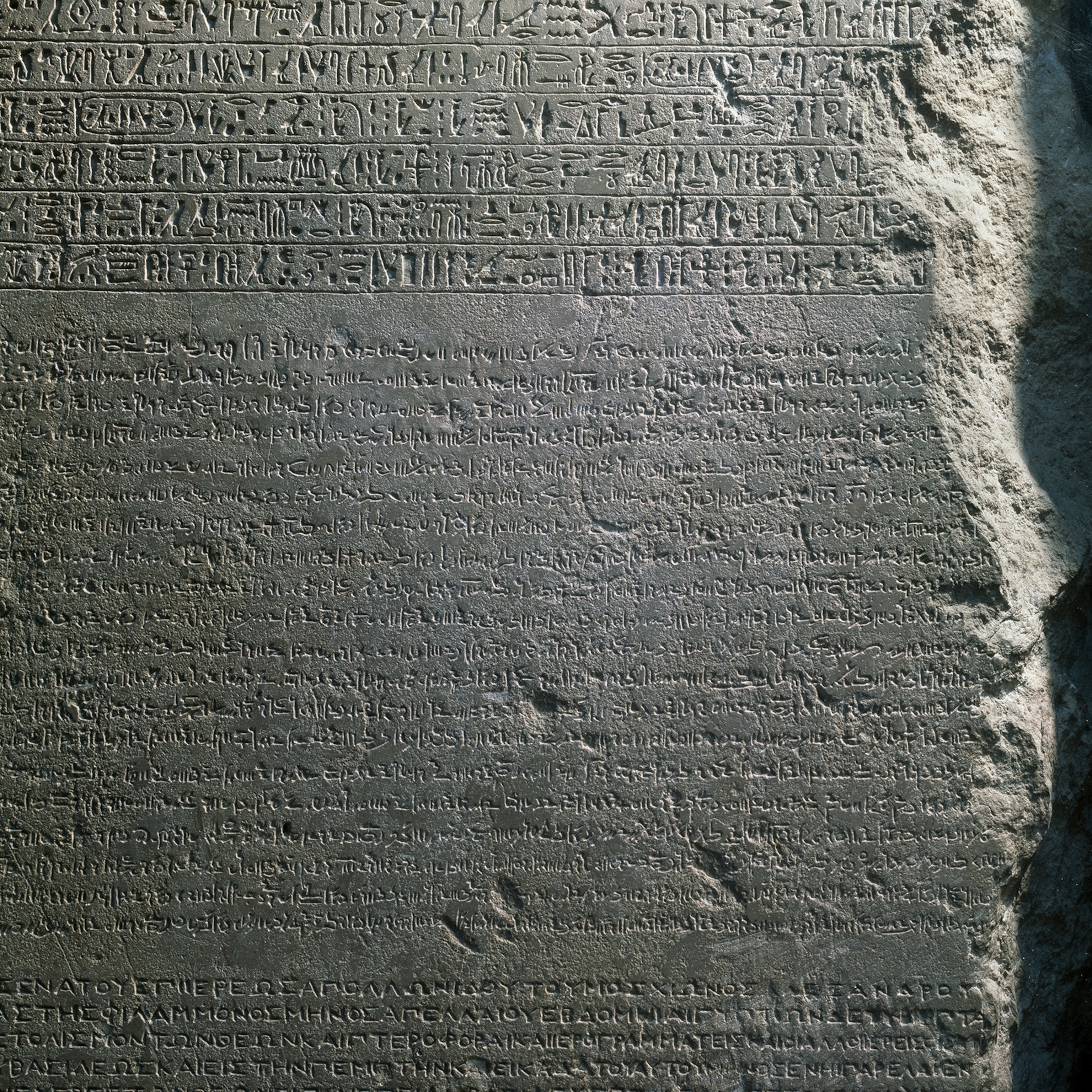
This 2,200-year-old slab bears the world’s first mention of leap year

There’s a better way to wake up. Here’s what experts advise.
More than 50 scientific papers a year are now published on the idea of time travel. why are scientists drawn to the subject.
Scientists live in the same science fictional universe as all the rest of us. Time travel is a sexy and romantic idea that appeals to the physicist as much as it appeals to every teenager. I don’t think scientists are ever going to solve the problem of time travel for us but they still love to talk about wormholes and dark matter.
There’s a fascinating coincidence in the early history that when H.G. Wells needed to set the stage for his time machine hurtling into the future, he decided not to just jump right into his story but set the scene with a framing device—his time traveler lecturing a group of friends on the science of time—in order to justify the possibility of a time machine. His lecture introduces the idea that time is nothing more than a fourth dimension, that traveling through time is analogous to traveling through space. Since we have machines that can take us into any of the three special dimensions, including balloons and elevators, why shouldn’t we have a machine able to travel through the fourth dimension?
A decade later, Einstein burst onto the scene with his theory of relativity in which time is a fourth dimension , just like space. Soon after that, Hermann Minkowski pronounced that, henceforth, we were not going to talk about space and time as separate quantities but as a union of the two, spacetime , a four-dimensional continuum in which the future already exists and the past still exists.
I’m not claiming that Einstein read H.G. Wells 10 years before. But there was something in the air that both scientists and imaginative writers were empowered to visualize time in a new way. Today, that’s the way we visualize it. We’re comfortable talking about time as a fourth dimension.
You quote Ursula K. Le Guin , who writes, “Story is our only boat for sailing on the river of time.” Talk about storytelling and its relationship to time.
One of the things that has happened, along with our heightened awareness of time and its possibilities, is that people who invent narratives have learned very clever new techniques. Literal time travel is only one of them. You don’t actually need to send your hero into the future or into the past to write a story that plays with time in clever new ways. Narrative is also how everybody, not just writers, constructs a vision of our own relationship with time. We imagine the future. We remember the past. When we do that, we’re making up stories.
Psychologists are learning something that great storytellers have known for some time, which is that memory is not like computer retrieval. It’s an active process. Every time we remember something we are remembering it a little bit differently. We’re retelling the story to ourselves.
If time travel is impossible, why do we continue to be so fascinated with the idea?
One of the reasons is we want to go back and undo our mistakes. When you ask yourself, “If I had a time machine, what would I do?” sometimes the answer is, “I would go back to this particular day and do that thing over.” I think one of the great time travel movies is Groundhog Day , the Bill Murray movie where he wakes up every morning and has to live the same day over and over again. He gradually realizes that perhaps fate is telling him he needs to do it over, right. Regret is the time traveler’s energy bar. But that’s not the only motivation for time travel. We also have curiosity about the future and interest in our parents and our children. A lot of time travel fiction is a way of asking questions about what our parents were like, or what our children will be like.
At some point during the four years I worked on this book, I also realized that, in one way or another, every time travel story is about death. Death is either explicitly there in the foreground or lurking in the background because time is a bastard, right? Time is brutal. What does time do to us? It kills us. Time travel is our way of flirting with immortality. It’s the closest we’re going to come to it.
This interview was edited for length and clarity.
Simon Worrall curates Book Talk . Follow him on Twitter or at simonworrallauthor.com .
Related Topics

Why daylight saving time exists—at least for now
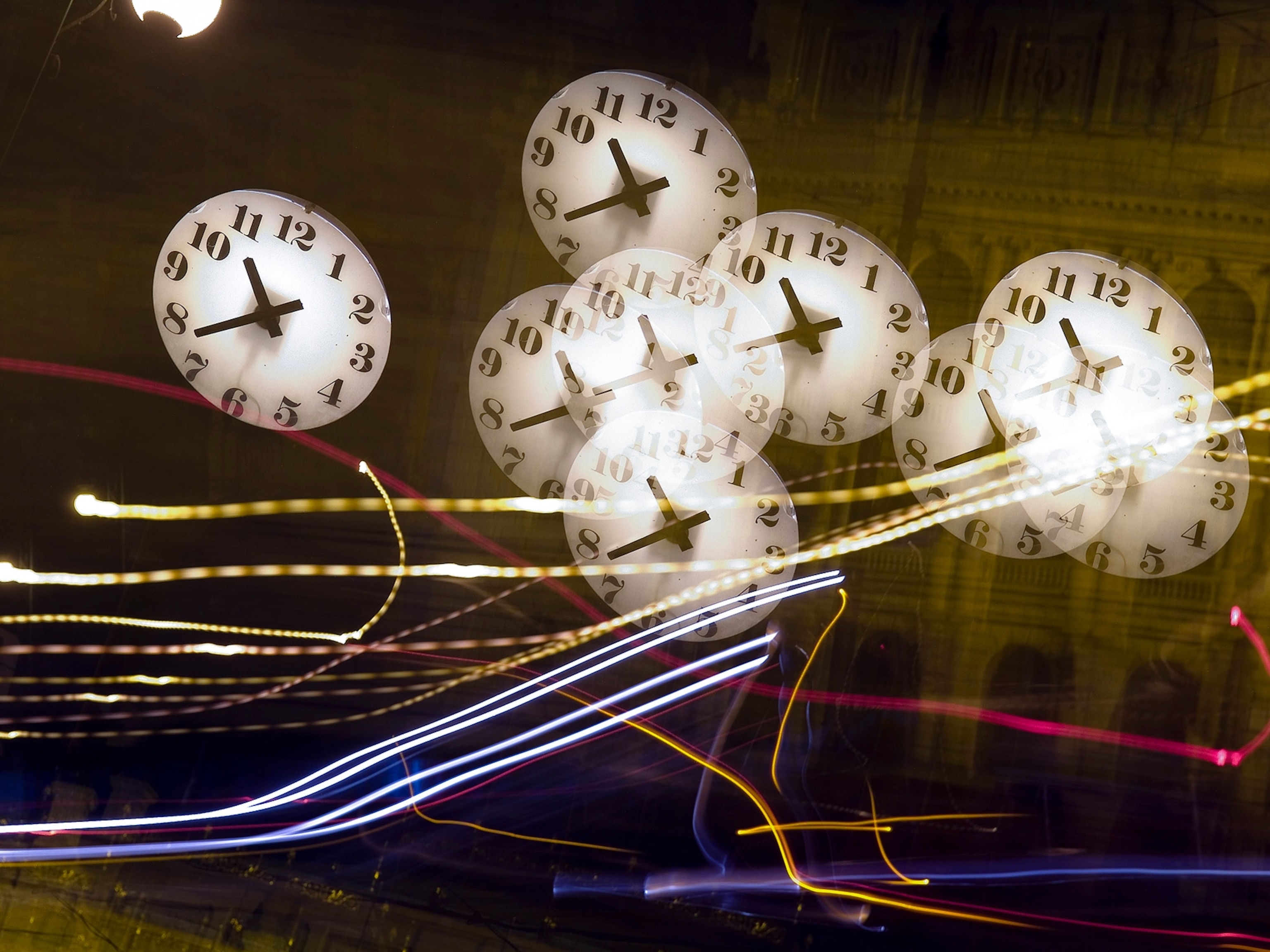
Leap year saved our societies from chaos—for now, at least

A Year After Everest Disaster, This Sherpa Isn't Going Back
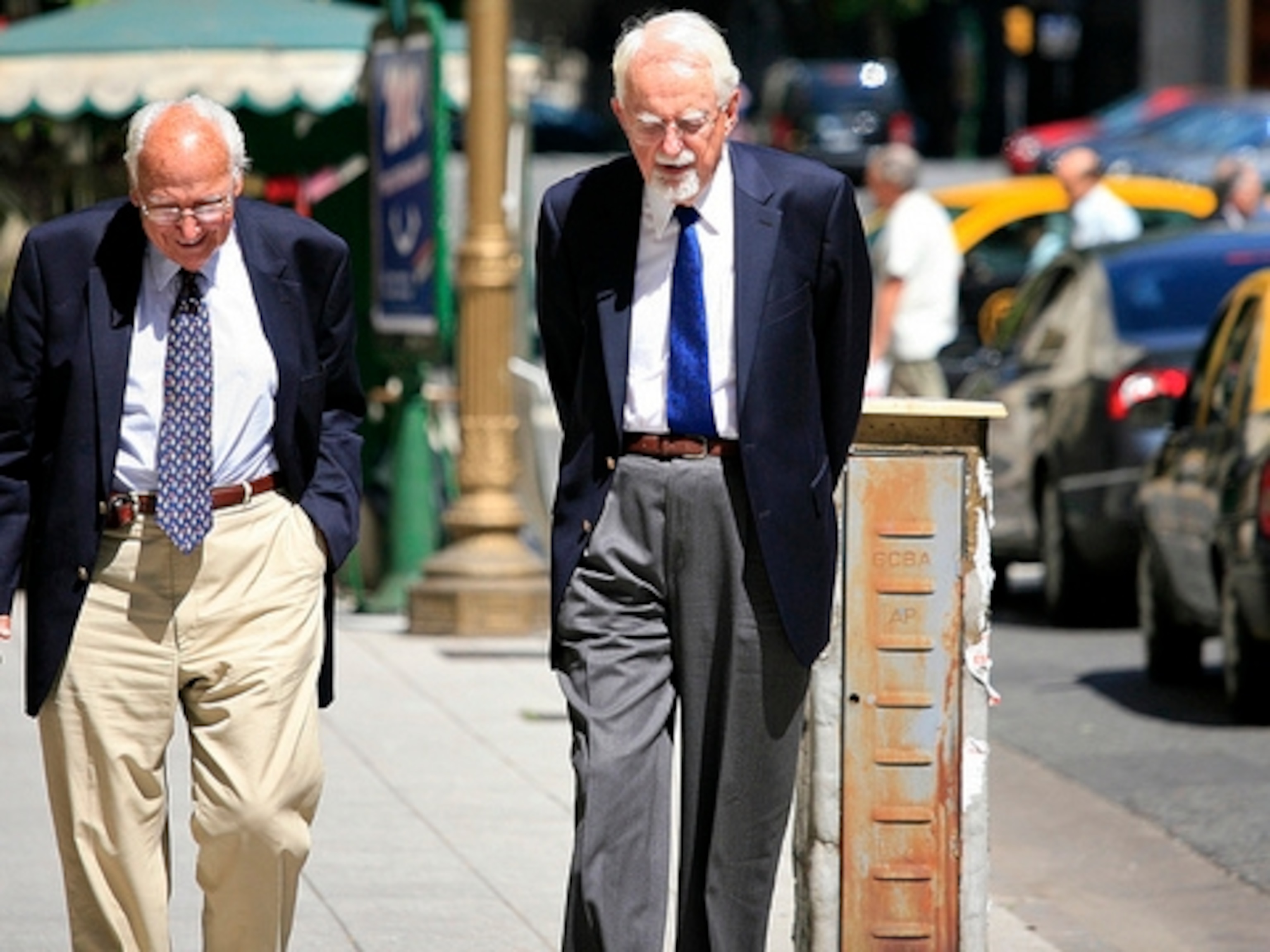
Primed by expectations – why a classic psychology experiment isn’t what it seemed
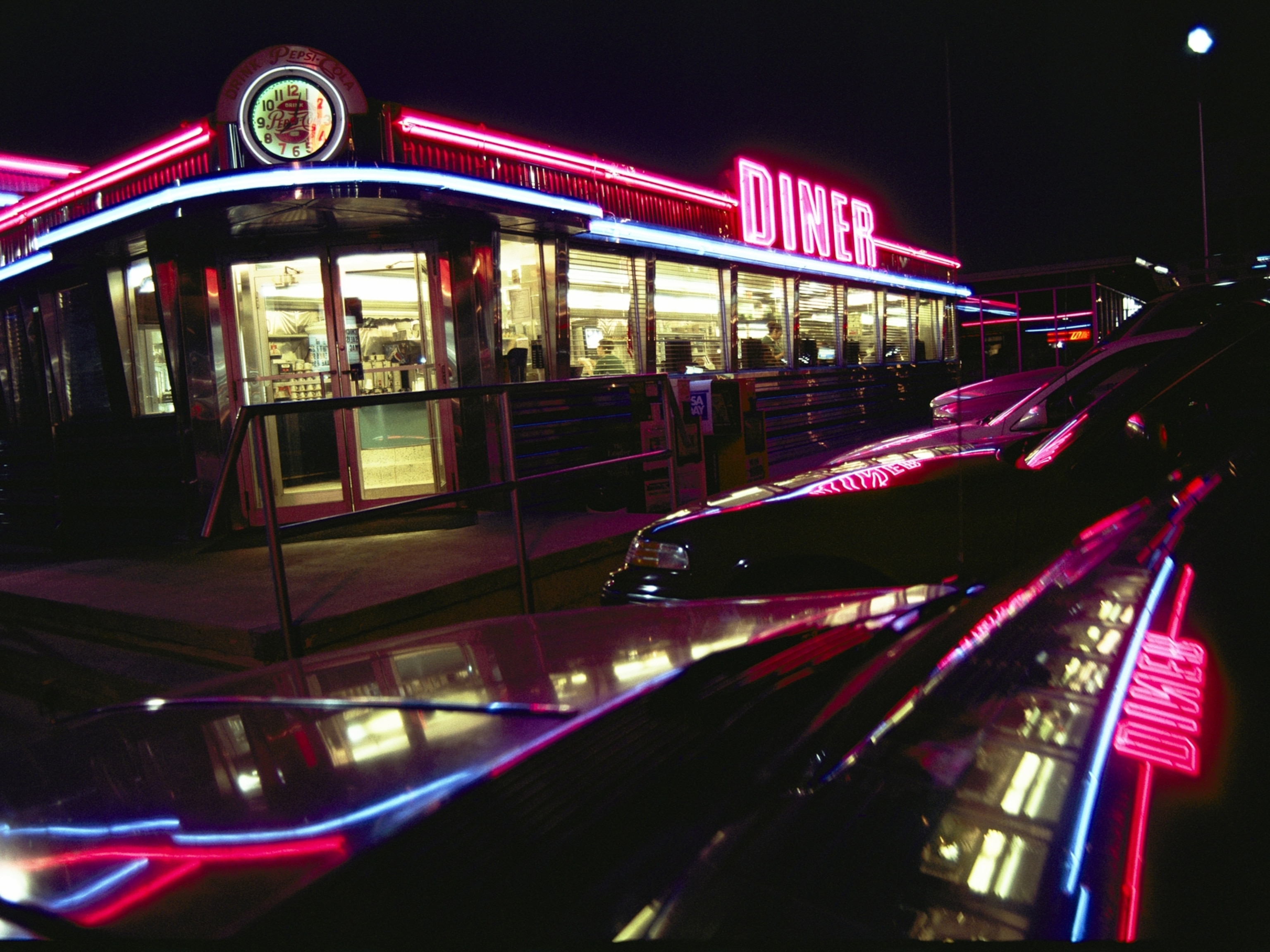
Does eating close to bedtime make you gain weight? It depends.
- Environment
- Paid Content
History & Culture
- History & Culture
- Terms of Use
- Privacy Policy
- Your US State Privacy Rights
- Children's Online Privacy Policy
- Interest-Based Ads
- About Nielsen Measurement
- Do Not Sell or Share My Personal Information
- Nat Geo Home
- Attend a Live Event
- Book a Trip
- Inspire Your Kids
- Shop Nat Geo
- Visit the D.C. Museum
- Learn About Our Impact
- Support Our Mission
- Advertise With Us
- Customer Service
- Renew Subscription
- Manage Your Subscription
- Work at Nat Geo
- Sign Up for Our Newsletters
- Contribute to Protect the Planet
Copyright © 1996-2015 National Geographic Society Copyright © 2015-2024 National Geographic Partners, LLC. All rights reserved
is time travel possible for humans?
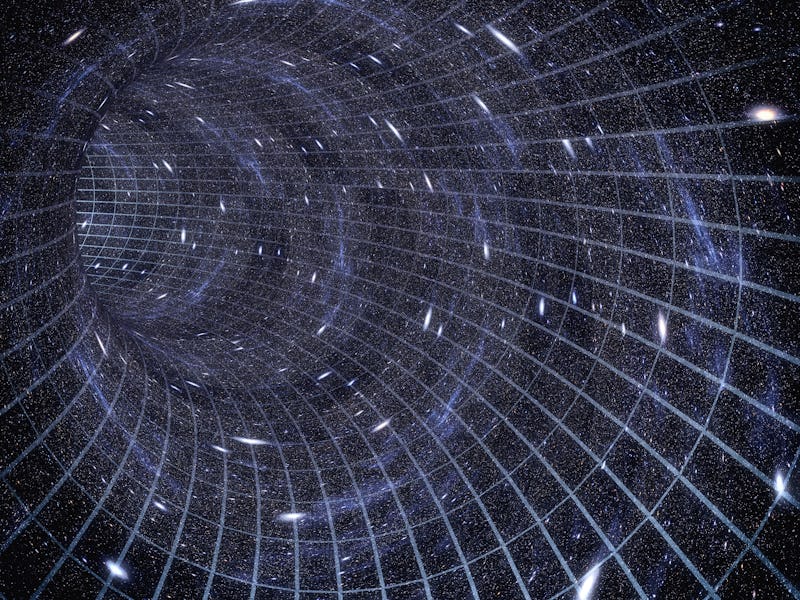
In books and movies, our favorite characters can use “time-turners” and treehouses to travel through time. Unfortunately, it isn’t that easy for people in real life. Let’s look at why.
First, there are two types of “time travel”: going back in time, and going forward in time.
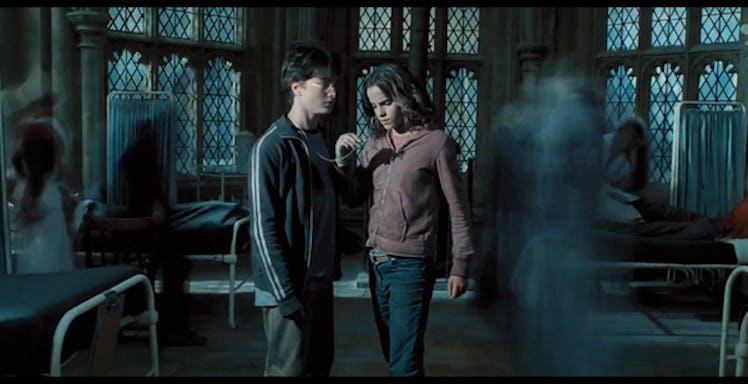
In the film Harry Potter and the Prisoner of Azkaban, characters Harry and Hermione use a time-turner to go back in time.
Traveling to the past
As far as we know, traveling back in time is impossible. Even sending information back in time is difficult to imagine, because it can change things that have already happened, which should be impossible.
Say you broke your arm falling off the monkey bars. What if you could travel back in time and tell yourself to not go on the bars? If you were successful, you’d never fall and break your arm. But then you would have no reason to travel back in time. So what does this mean for your arm? Did it break, or not?
If thinking about this makes your head hurt, you’re not alone.
Time traveling is a confusing idea for most people. That’s because when we think of time, we think about it as going in a straight line, with one thing happening after another.
If we could travel back in time and change something that happened before, we would then change the order of that line. This would mean breaking a rule called “ causality ”.
Causality is the rule saying that a “cause” (your actions, for instance) happens before an “effect” (the result of your actions). In our monkey bar example, the cause is falling, and the effect is breaking your arm – which happens because you fell.
Causality is one of the unbreakable rules of the universe. Breaking it would have nasty consequences for the universe and all of us. Experts think that because the universe has this rule, traveling to the past must be impossible otherwise the rule would be broken all the time.
Traveling to the future
If going to the past is impossible, can we go forward in time to the future?
Well, technically we’re already traveling forward in time because time is passing. Every second we travel one second into the future. But this happens to everyone, so it’s not really time travel, right?
Well, believe it or not, two people can feel time at different rates. Time passes differently for someone who is moving fast, compared to someone who is staying still. This is a very complicated idea called “time dilation”.
Someone flying from Sydney to Melbourne will feel like the time passed more quickly than someone waiting for them at the airport without moving for the whole time the flight was in the air. So why don’t we notice this difference?
It’s because you have to be moving much, much faster than an airplane before you start to notice time dilation. Even if you flew all the way around the world, the time would only feel about a billionth of a second difference to someone who stayed home.
The only way scientists even know about time dilation is because of amazingly accurate experiments that have measured it.
Unfortunately, this still can’t help us “time travel”. If you flew around the world for more than four million years, people on the ground would only have experienced one more second than you!
How fast can we go?
So if it’s all down to speed, the answer must be to go faster, right? If you could go fast enough for long enough, hundreds of “human” years could slip by on your journey, meaning you would feel like you were traveling into the future!
Unfortunately, a fast enough speed to do this would be close to the speed of light, which is the fastest speed anything can go. Light travels at about one billion kilometers every hour – that’s very, very fast.
The fastest human-made thing is NASA’s Parker Solar Probe, a spaceship sent to the Sun in August 2018. But as fast as it is , it’s only 0.064% as fast as the speed of light. So light is more than 1,000 times faster!
All of this means that if humans want to visit the future, we’ve got a long, long way to go.
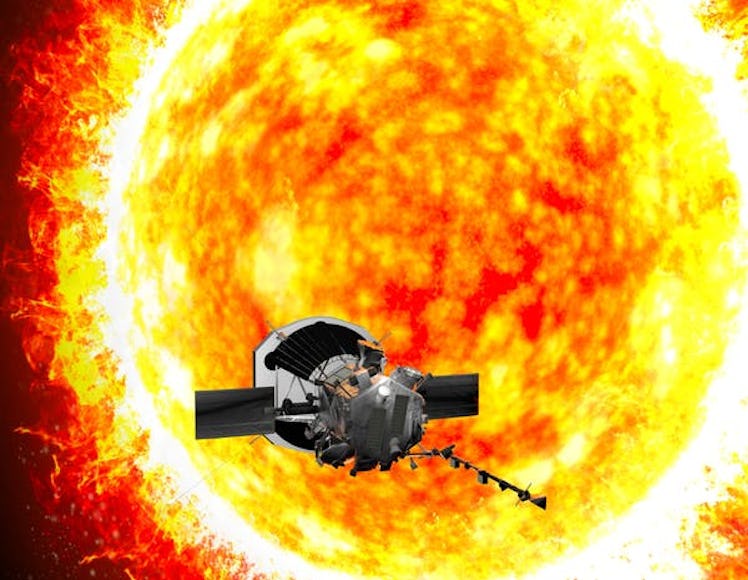
NASA’s Parker Solar Probe can go as fast as 692,000km per hour.
Looking back to the past
Ok, so we can’t time travel. But we can see into the past, every night.
Light has a fixed speed, as we just learned. It’s really, really fast, but things in the universe are so far apart that it still takes a long time for light to reach us from faraway stars and planets.
When light arrives from the Sun, the light we see actually left the Sun eight minutes and twenty seconds ago. This means we see the Sun as it was eight minutes and twenty seconds in the past . By the way, remember never to look straight at the Sun as it can damage your eyes.
The nearest galaxy to our Milky Way is the Canis Major dwarf galaxy, which is 25,000 light-years away. This means it takes the light 25,000 years to get here!
When we look at this galaxy through a telescope, we’re actually seeing it as it was more than 25,000 years ago. So although we can’t time-travel ourselves, we can look up to the sky and see the past every night.
This article was originally published on The Conversation by Lucy Strang at the University of Melbourne and Jacqueline Bondell at Swinburne University. Read the original article here .
- Science Fiction

Science Fiction or Fact: Is Time Travel Possible?
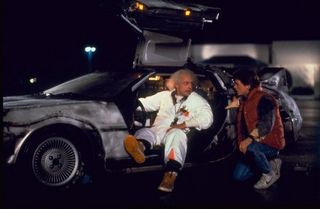
In this weekly series, Life's Little Mysteries rates the plausibility of popular science fiction concepts.
In the first "Back to the Future" movie, all it took to travel through time was 1.21 gigawatts and a flux capacitor (packed into a DeLorean sports car for style points). Despite centuries of dreams and decades of bona fide research, flux capacitors remain beyond our grasp, as do any other time travel-enabling devices.
From a pure physics point of view, travel into the future is not at all impossible and in fact happens all the . . . time. With all due respect to Doc Brown, however, backward time travel stacks up as a much tougher proposition.
"We can travel at different rates to the future," said Seth Lloyd, a professor of quantum mechanical engineering at the Massachusetts Institute of Technology. "To go into the past and mess around with it, that's more controversial."
My watch or yours?
For a real, everyday example of time travel, consider the satellites of the Global Positioning System . Were it not for built-in calibrations, the GPS atomic clocks would gain 38 microseconds over terrestrial timepieces every day, throwing off their location accuracy by several miles. "Clocks on Earth tick a tiny bit slower than satellites out in space," said Lloyd.
The reason: time dilation, as described by Einstein's two theories of relativity. According to the special theory, the faster an object moves relative to another object, the slower it experiences time. For GPS satellites zooming around Earth at nearly 9,000 mph (14,000 kph), this effect cuts seven microseconds off their clocks daily (relative to clocks on Earth).
Sign up for the Live Science daily newsletter now
Get the world’s most fascinating discoveries delivered straight to your inbox.
The second effect, explained by the general theory of relativity, involves gravity. Clocks closer to the center of a gravitational mass, such as Earth, tick more slowly than those farther away. GPS satellites orbit 12,500 miles (20,100 km) above the ground, and as a result have 45 microseconds tacked onto their clocks per day. The net result of the two relativistic phenomena is 38 microseconds, which engineers have accounted for with GPS technology.
Future, here we come
Both of these time dilation pathways — motion through space or a strong gravity well — permit time travel into the future.
A popular imagining of the first scenario involves astronauts cruising aboard a rocket ship at extremely high speed to a distant star. Upon their return, the ship's occupants will have aged mere years while centuries have passed on Earth. (An unintended version of this situation befalls Charlton Heston and his crew in the original 1968 movie " Planet of the Apes .")
Pulling off such a feat is really only a matter of investment, technology and will. "Doing 'century hopping' via relativity will require some engineering solutions to things like building rocket engines with enough fuel supplies for very prolonged trips," said Jeff Tollaksen, a professor of physics at Chapman University in Orange, Calif. [ 7 Everyday Things That Happen Strangely in Space ]
Going to a distant star and back would not even be necessary — all that is required is motion. The time-traveling effect would be achieved by simply getting whirled in a giant centrifuge at near-light speeds, Tollaksen said (though it would kill whoever attempted it).
The second, gravity-based scenario poses similar lethality, at least for someone wanting an appreciable difference in his relative time frame. If you stood on a neutron star for a few years, a decade would elapse on Earth. Of course, you would not survive the supermassive star's crushing, rending gravity, making this approach truly a "Rip" van Winkle method.
Yesteryears
What of diving into the past? According to general relativity, a rotating black hole can warp space-time, forming paths to previous moments. "You have these so-called timelike curves that you could follow that would take you back to your past," said Lloyd. [ What Would It Be Like to Travel Faster than the Speed of Light? ]
Quantum mechanics has opened up strange avenues as well. Experiments have shown that measuring a particle property at an initial and end stage can modify its middle value, but only if the last measurement takes place. Such clues toward a possible "backwards causality" continue to be investigated.
A major showstopper for traveling back in time, however, is common sense. A classic example is the grandfather paradox , in which a time traveler goes into the past and murders his grandfather, thus preventing the time traveler from ever being born.
Yet there might be ways around this mind-bender. Lloyd has conducted quantum mechanical experiments in the last few years that suggest timelines remain self-consistent. The tests served as "the moral equivalent of sending a photon a few billionths of a second backwards in time and having it try to kill its former self," Lloyd said.
In Lloyd's experiment, as photons got ever closer to interfering with themselves, the probability of the experiment succeeding grew ever lower. "Our theory has an automatic censorship of things which are completely inconsistent," said Lloyd. "When you go back [in time], no matter how hard you try, you cannot change the thing you try to change."
In theory, then, Grandpa lives, no matter what.
Space-time busters?
A couple of other domains offer hope for would-be time travelers. Moving faster than light — the universal reference point — would do the trick, hence the excitement over last year's finding in Europe of superluminal neutrinos , a seemingly impossible finding that has been widely faulted.
Wormholes — theoretical "tunnels" through space-time — also could burrow into the past or future just as they might connect different regions in the cosmos.
Neither of these alternatives seems particularly likely. As much as many of us might hate to admit it, the past, with all of its mistakes, could remain sealed off from our efforts to redo it.
"Even if the laws of physics allowed visiting the past," Lloyd said, "it is not clear how it might actually happen in our universe."
Plausibility score: A one-way ticket to the future requires a hefty budget and a heck of a lot of engineering know-how. Voyaging into the past, however, looks to be near impossible, so we give time travel two out of four Rocketboys.

This story was provided by Life's Little Mysteries , a sister site to LiveScience.
The universe had a secret life before the Big Bang, new study hints
World's fastest microscope can see electrons moving
NASA spacecraft captures 1st photo of its giant solar sail while tumbling in space
Most Popular
- 2 What??? James Webb telescope finds giant question mark in space
- 3 'Microbes of death' can reveal when a frozen body died, forensic scientists explain
- 4 16,000-year-old skeleton, crystals and stone tools discovered in Malaysian caves
- 5 Astronaut watches a meteor explode over Earth in a bright green fireball in stunning video from ISS
Time travel is theoretically possible, calculations show. But that doesn't mean you could change the past.
- Time travel is possible based on the laws of physics, according to researchers.
- But time-travelers wouldn't be able to alter the past in a measurable way, they say.
- And the future would essentially stay the same, according to the reseachers.

Imagine you could hop into a time machine, press a button, and journey back to 2019, before the novel coronavirus made the leap from animals to humans.
What if you could find and isolate patient zero? Theoretically, the COVID-19 pandemic wouldn't happen, right?
Not quite, because then future-you wouldn't have decided to time travel in the first place.
For decades, physicists have been studying and debating versions of this paradox: If we could travel back in time and change the past, what would happen to the future?
A 2020 study offered a potential answer: Nothing.
"Events readjust around anything that could cause a paradox, so the paradox does not happen," Germain Tobar, the study's author previously told IFLScience .
Tobar's work, published in the peer-reviewed journal Classical and Quantum Gravity in September 2020, suggests that according to the rules of theoretical physics, anything you tried to change in the past would be corrected by subsequent events.
Put simply: It's theoretically possible to go back in time, but you couldn't change history.
The grandfather paradox
Physicists have considered time travel to be theoretically possible since Albert Einstein came up with his theory of relativity. Einstein's calculations suggest it's possible for an object in our universe to travel through space and time in a circular direction, eventually ending up at a point on its journey where it's been before – a path called a closed time-like curve.
Related stories
Still, physicists continue to struggle with scenarios like the coronavirus example above, in which time-travelers alter events that already happened. The most famous example is known as the grandfather paradox: Say a time-traveler goes back to the past and kills a younger version of his or her grandfather. The grandfather then wouldn't have any children, erasing the time-traveler's parents and, of course, the time-traveler, too. But then who would kill Grandpa?
A take on this paradox appears in the movie "Back to the Future," when Marty McFly almost stops his parents from meeting in the past – potentially causing himself to disappear.
To address the paradox, Tobar and his supervisor, Dr. Fabio Costa, used the "billiard-ball model," which imagines cause and effect as a series of colliding billiard balls, and a circular pool table as a closed time-like curve.
Imagine a bunch of billiard balls laid out across that circular table. If you push one ball from position X, it bangs around the table, hitting others in a particular pattern.
The researchers calculated that even if you mess with the ball's pattern at some point in its journey, future interactions with other balls can correct its path, leading it to come back to the same position and speed that it would have had you not interfered.
"Regardless of the choice, the ball will fall into the same place," Dr Yasunori Nomura, a theoretical physicist at UC Berkeley, previously told Insider.
Tobar's model, in other words, says you could travel back in time, but you couldn't change how events unfolded significantly enough to alter the future, Nomura said. Applied to the grandfather paradox, then, this would mean that something would always get in the way of your attempt to kill your grandfather. Or at least by the time he did die, your grandmother would already be pregnant with your mother.
Back to the coronavirus example. Let's say you were to travel back to 2019 and intervene in patient zero's life. According to Tobar's line of thinking, the pandemic would still happen somehow.
"You might try and stop patient zero from becoming infected, but in doing so you would catch the virus and become patient zero, or someone else would," Tobar said, according to Australia's University of Queensland , where Tobar graduated from.
Nomura said that although the model is too simple to represent the full range of cause and effect in our universe, it's a good starting point for future physicists.
Watch: There are 2 types of time travel and physicists agree that one of them is possible
- Main content
- TN Navbharat
- Times Drive
- Health and Me
- ET Now Swadesh
technology & science
Is Time Travel Possible? Here's What NASA Says
Updated Jan 5, 2024, 10:55 IST
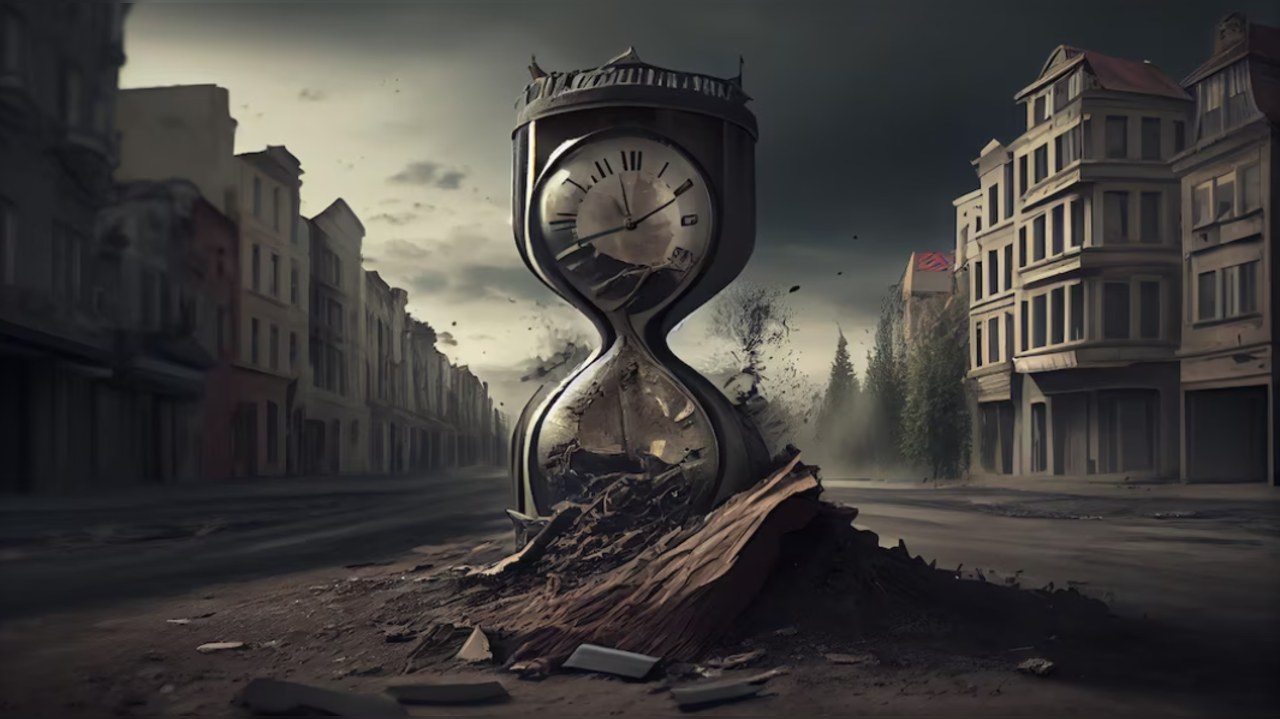
Celebrate Ganesh Chaturthi With Exclusive Modak Recipes Shared By 3 Chefs

Delhi, Get Ready For A 'Theme-Based Walk Festival' This October; Details Inside

14-Year-Old Girl Diagnosed With End-Stage Kidney Failure In UK After Showing Flu Symptoms

Did You Know Amy Jackson And Ed Westwick Served Fried Pizza, Pasta To Guests During Italian Wedding Festivities?

Soniya Bansal EXCLUSIVE Interview: On Depression, Bigg Boss 17, Abhishek Kumar, Khanzaadi And More

Cheese Rice: A Kid-Friendly Dinner Option

Dhvani Bhanushali Set To Make Debut With Kahan Shuru Kahan Khatam, Reveals Drawing Inspiration From Kareena Kapoor

Paparazzo Reveals Jaya Bachchan Doesn't Like Getting Clicked 'Off Guard': She Doesn't Mind Them When...

Meta’s Big Change: How Facebook And Instagram Will Now Reveal AI-Edited Content

OnePlus 13 Launch Date, Price In India, Specifications, Design And More: Check Latest Leaks Here

Dangers of AI Emotional Manipulation: How ChatGPT’s New Voice Mode Blurs Human Boundaries

Samsung Galaxy S25 Ultra Release Date, Price In India, Specifications, Design And More: All We Know So Far

WhatsApp’s Meta AI Voice Feature Will Soon Let You Chat Using Voices Of Public Figures, Here Is How

IMAGES
VIDEO
COMMENTS
Time can speed up or slow down, depending on the circumstances. "This is where time travel can come in and it is scientifically accurate and there are real-world repercussions from that," says ...
In Summary: Yes, time travel is indeed a real thing. But it's not quite what you've probably seen in the movies. Under certain conditions, it is possible to experience time passing at a different rate than 1 second per second. And there are important reasons why we need to understand this real-world form of time travel.
The simplest answer is that time travel cannot be possible because if it was, we would already be doing it. One can argue that it is forbidden by the laws of physics, like the second law of ...
Some scientists are exploring other ideas that could theoretically allow time travel. One concept involves wormholes, or hypothetical tunnels in space that could create shortcuts for journeys across the universe.If someone could build a wormhole and then figure out a way to move one end at close to the speed of light - like the hypothetical spaceship mentioned above - the moving end would ...
Time traveling to the near future is easy: you're doing it right now at a rate of one second per second, and physicists say that rate can change. According to Einstein's special theory of ...
Famously, physicist Stephen Hawking tested the possibility of time travel by throwing a dinner party where invitations noting the date, time and coordinates were not sent out until after it had ...
As he : "The best evidence we have that time travel is not possible, and never will be, is that we have not been invaded by hordes of tourists from the future.". Interestingly, astrophysicists ...
Is time travel possible? According to NASA, time travel is possible, just not in the way you might expect. Albert Einstein's theory of relativity says time and motion are relative to each other ...
According a new paper from researchers at the University of Queensland, even if time travel were possible, the paradox couldn't actually exist. Researchers ran the numbers and determined that even ...
Time isn't the same everywhere. Some scientists are exploring other ideas that could theoretically allow time travel. One concept involves wormholes, or hypothetical tunnels in space that could create shortcuts for journeys across the universe.If someone could build a wormhole and then figure out a way to move one end at close to the speed of light - like the hypothetical spaceship ...
Time travel and parallel timelines almost always go hand-in-hand in science fiction, but now we have proof that they must go hand-in-hand in real science as well. General relativity and quantum ...
The Order of Time Carlo Rovelli Allen Lane (2018) According to theoretical physicist Carlo Rovelli, time is an illusion: our naive perception of its flow doesn't correspond to physical reality ...
5 August 2013. Is time travel possible? The simple answer is yes. The more complex answer is it requires travelling close to the speed of light. And always going forward. Unless you find a ...
As a theoretical physicist, I find that there are several possible answers to this question, not all of which are contradictory. The simplest answer is that time travel cannot be possible because if it was, we would already be doing it. One can argue that it is forbidden by the laws of physics, like the second law of thermodynamics or relativity.
Time travel and parallel timelines almost always go hand-in-hand in science fiction, but now we have proof that they must go hand-in-hand in real science as well. General relativity and quantum ...
Time travel is also a powerful way of allowing us to imagine what the future might bring. A lot of futurists nowadays tend to be dystopian. Time travel gives us ways of exploring how the worst ...
This so-called Tipler cylinder is the closest that real-world physics can get to an actual, genuine time machine. ... Hawking was skeptical about the feasibility of time travel into the past, not ...
Unfortunately, it isn't that easy for people in real life. Let's look at why. First, there are two types of "time travel": going back in time, and going forward in time. In the film Harry ...
For a real, everyday example of time travel, consider the satellites of the Global Positioning System. Were it not for built-in calibrations, the GPS atomic clocks would gain 38 microseconds over ...
So there's two general hypotheses or theories about the nature of time. One of them we'll call Presentism. And Presentism the notion is that only the present is real. The past was real. The ...
Doc Brown and Marty McFly in "Back to the Future." Universal Pictures. Time travel is possible based on the laws of physics, according to researchers. But time-travelers wouldn't be able to alter ...
Well, time travel isn't just reserved for Marty McFly and Doc Brown. It's a real phenomenon, though not the time-hopping adventure we know in fictions. The next time you're using GPS to find your way, remember: you're benefiting from a bit of time travel magic to keep you on the right path.
The first page of The Time Machine published by Heinemann. Time travel is the hypothetical activity of traveling into the past or future.Time travel is a widely recognized concept in philosophy and fiction, particularly science fiction. In fiction, time travel is typically achieved through the use of a hypothetical device known as a time machine.The idea of a time machine was popularized by H ...
The real-time travel data list shows travel alerts, cameras, truck restrictions and mountain pass reports in a list by road. ... travel time signs and send data from the roadside to the Traffic Management Centers. This data provides traffic conditions to the website. Related travel information. Rest areas. Park & rides.